Davis creators



This news is hot off the French presses. There’s trouble brewing in a battle between coffee and tea. Jealous of how popular coffee has become, King Tea seeks to change all world clocks to Tea Time and cause a rift in the realm of time. Cup Joe and his Coffee Time friends (Thermos, Little Miss Hot Shot, Donette) try to stop King Tea from changing the world clocks to Tea Time.
That’s the premise behind “Coffee Time,” an introductory strategic board game stirred up by ground-up Davisites: game designers Aaron Wedra and Stevie Price, editor Milly Judd (Wedra’s fiancée), abstract artist Sam Lundholm, game music creator Matthew Wright, and King Tea artist Landon Christensen.
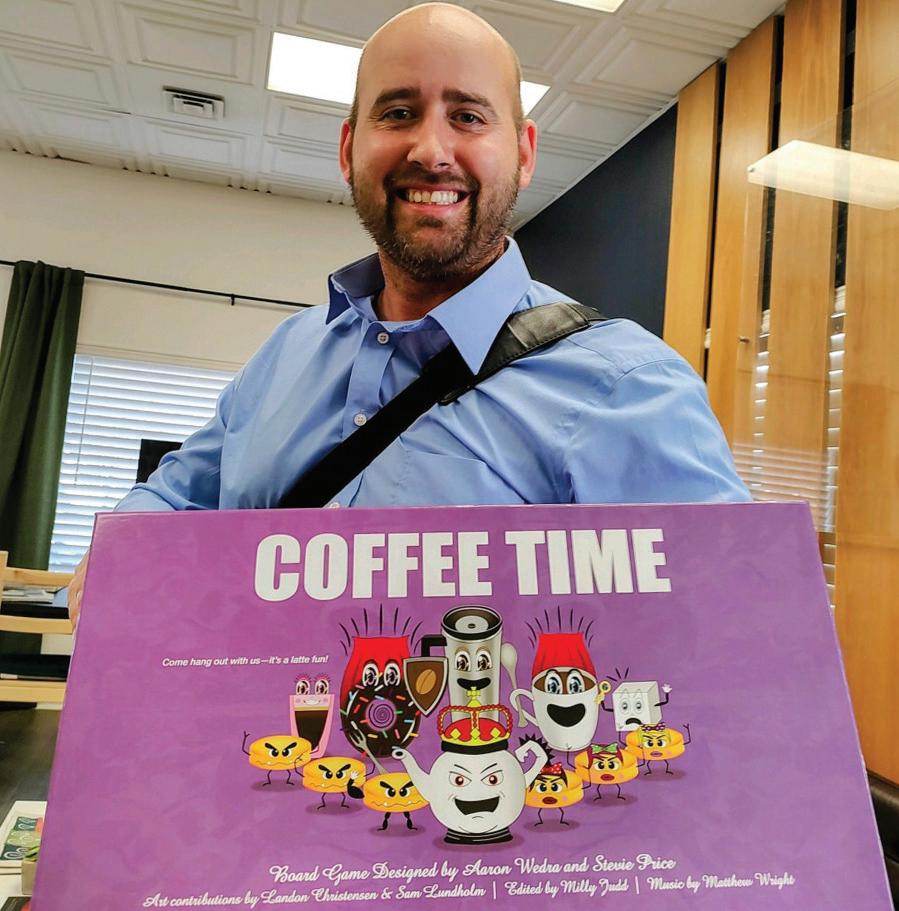
In short, Wedra made the board game for a video design class final at Sacramento City College five years ago. The

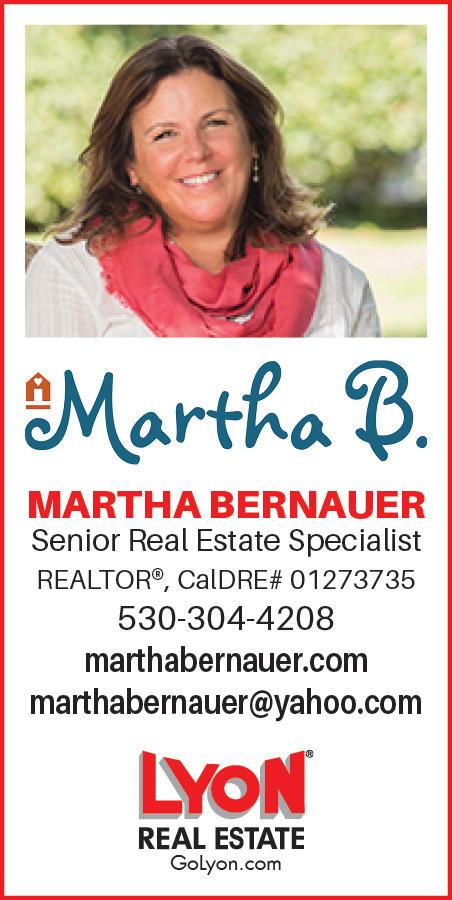
 By Anne Ternus-Bellamy Enterprise staff writer
By Anne Ternus-Bellamy Enterprise staff writer

The City Council on Tuesday voted unanimously to restrict sprinkler irrigation for residential and commercial properties to two days per week.

The watering restrictions come as signs point to a fourth year of drought ahead. The past three water years have been the driest on record for California, the city noted in a press release on Thursday, and drought has stressed water storage and supplies.
In addition to watering restrictions, the City Council last May also voted to adopt Shortage Level 2 requirements following direction from the state,

which was requiring all urban water suppliers to do so.
That included a ban on washing cars in driveways, requiring instead that
As the nation's largest-ever higher education strike approaches its sixth week, graduate student workers reach tentative agreements with the University of California, the United Auto Workers announced on Friday night. The contract will now go to the UAW’s membership for a ratification vote. The ratification vote dates and duration have been set for Monday through Friday.
“Our union’s membership is the highest decision-making body, and it is now up to all members to vote on this tentative agreement. We have engaged in an extensive democratic process up to this point, including open bargaining sessions and widelyattended bargaining caucuses,” said Rafael Jaime, President of UAW 2865 in a press release. “The progress we’ve made has been due to mass participation of membership, and it’s the membership who will decide on contract ratification.”
“I want to congratulate the parties for today’s historic agreement,” said Sacramento Mayor Darrell Steinberg, who served as the mediator. “Together, they reached a principled solution to end the difficult impasse.




It was a changing of the guard at the school board meeting on Thursday.
Although the meeting was filled with its usual updates, it also featured heartfelt farewells from — now-former — board members Vigdis Asmundson and Tom Adams.
With outgoing Board President Adams stepping aside, the position went to Lea Darrah. Oaths of office were taken by the re-elected Joe DiNunzio and the two newly elected trustees, Hiram Jackson and Elizabeth Moon.
Following that were parting words from Asmundson and Adams.
“It was an absolute honor to serve my community and to be on the school board,” Asmundson said. “I want to thank everybody in this community, everybody in the district office, the superintendent and all of our educators who allowed me to model a growth mindset which is what we want for all our students by being patient with the way we’re all learning when we’re up there on
the dais and doing our best. One of the things I’m most grateful for is the opportunity that everybody afforded me to continue to grow and continue to learn.”
“Tim Taylor said early on before I got on the board, ‘You’re one of five. And that means you have to work as a team,’ ” Adams recalled.
“I think that is one of the great joys about being a Trustee is I got to be a team member on some really good things. The staff here is incredible, the parents are engaged and the students are wonderful. It’s a great community that we have, and the problems we have are quite small and they can be overcome because every time we face an issue, we overcome it as a community. We’ve been tested, but we all hung together.”
gave a presentation on the DJUSD interim financial report for 2022-23. The review touched on comparisons to the approved budget, multi-year projections, grant allocations as well as considerations for fiscal sustainability.
moment in time,” said Watkins. “It’s guaranteed to change and school finance experts characterize budget projections as ‘exactly wrong’ and ‘approximately right.’ As stated earlier in this presentation, 63% of our general fund revenue is generated from enrolment and attendance revenue, through the LCFF.”
Another update included the Ethnic Studies (ES) Stand-Alone Course Requirement and was presented by Interim Associate Superintendent, Troy Allen. She touched on how the DJUSD Ethnic Studies advisory group finalized the definition of Ethnic Studies.
Americans, Asian Americans and Latinx Latino/Latina Americans and then addresses the learning outcomes and teachings that help frame our program. This course has been designed so all students can reflect on their identities and students learn critical concepts applicable for all of us.”
Home delivery: 325 G St., 530-756-0826 Delivery phone hours : Mon.-Fri. 9 a.m.-1 p.m.; Sun. 7-10 a.m. Business office : 325 G St. 530-756-0800 Hours: Mon. - Fri. 9 a.m. - 4 p.m. EMAIL News newsroom@davisenterprise.net Sports sports@davisenterprise.net Home Delivery circulation@davisenterprise.net Classifieds classads@davisenterprise.net Advertising ads@davisenterprise.net Legal Notices legals@davisenterprise.net Obituaries obit@davisenterprise.net Production graphics@davisenterprise.net


Associate superintendent of business services Amari Watkins
“It’s important to note the multiyear projection is not a forecast, not based on statistical analysis and is a projection based on the best information we have at this
“It’s identified as the critical interdisciplinary study of race, ethnicity, indigeneity in the United States that focuses on the experiences of the people of color,” said Allen. “It further defines four ethnic groups of color including our Native Americans, African
Allen then went over the ES program development timeline, the development process and the course overview. In the 2023-24 school year, ninth graders will have one semester of World Geography or ES. In 2024-25, ninth-graders will have one semester of ES and by 2028-29, ES will be a DJUSD graduation requirement.
With that, the meeting came to an end with the next scheduled for Jan 5 of the new year.
— Reach Aaron Geerts at aaron. geerts@mcnaughton.media. From


Prior to that, the city had adopted some Level 2 water use limits, including limiting sprinkler irrigation.
The watering restrictions only apply to sprinkler and spray irrigation and not to other watering methods including drip systems and hand watering. Odd-numbered addresses are allowed to water on Tuesdays and Saturdays and even-numbered addresses on Wednesdays and Sundays. The restrictions do not apply to tree watering.
The city has seen an overall reduction in water use since Gov. Gavin
Newsom called for voluntary 15 percent reductions, said the city’s conservation coordinator, Dawn Calciano.
However, she told the City Council on Tuesday, “we’re not quite meeting that 15 percent that the governor’s looking for.”
Nor is the majority of the state, Calciano added.
A water supply strategy released by the governor in August, Calciano said, “outlines the implementation steps if drought does continue and that they’d be looking at new short-term requirements that could take effect in the spring of 2023.”
“So why implement
Bob Dunning is on vacation. The Wary I will return on Wednesday.
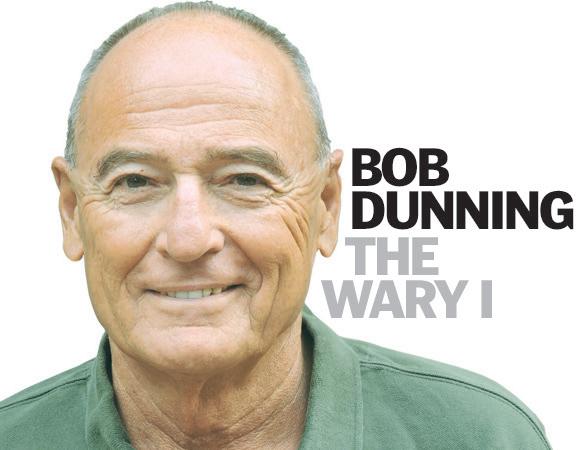
watering restrictions? To prepare for potential mandatory state reduction requirements in spring of 2023,” she said. “Unless we get significant continued rainstorms, we’re likely to see a fourth year of drought.”
Additional local restrictions, she said, “bring us closer to meeting that voluntary requirement of the governor, that 15 percent.”
Stan Gryczko, director of public works utilities and operations for the city, noted that water supplies,

including Oroville, Shasta and other reservoirs, have been stressed by three years of drought and are at minimum capacity.
“A fourth year of drought is likely,” he said. “Despite the rain we’ve just had, we are still in a condition where going into next summer is going to be challenging.”
Outgoing Mayor Lucas Frerichs agreed, saying, “even though it’s been raining in the past few days, it definitely feels like something we need to be moving
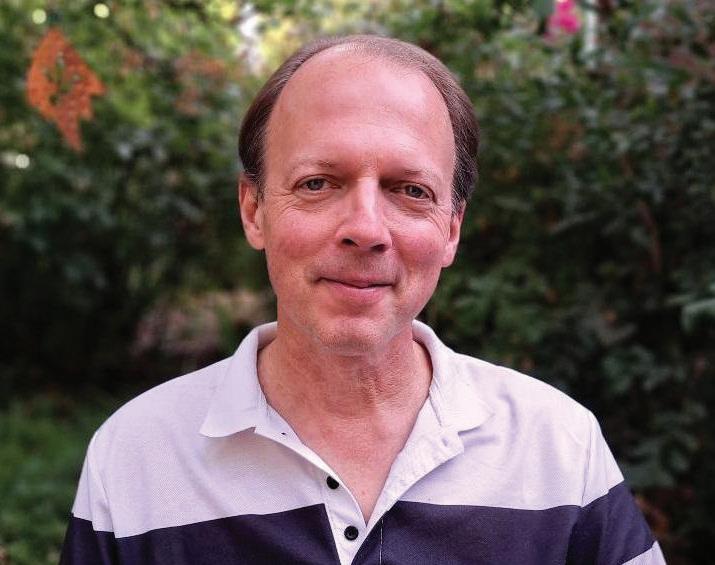
ahead with, trying to do as much as possible not only to conserve water, but make sure we’re planning wisely.
“In the last couple of years, we’ve had rain in the November-December time frame and then it’s kind of stopped mid-winter here, so I think it’s a wise move for us to be taking.”
— Reach Anne TernusBellamy at aternus@ davisenterprise.net. Follow her on Twitter at @ATernusBellamy.
The owners of Woodstock’s Pizza pushed hard in hopes of opening on Friday, but inspectors wouldn’t give the go-ahead.
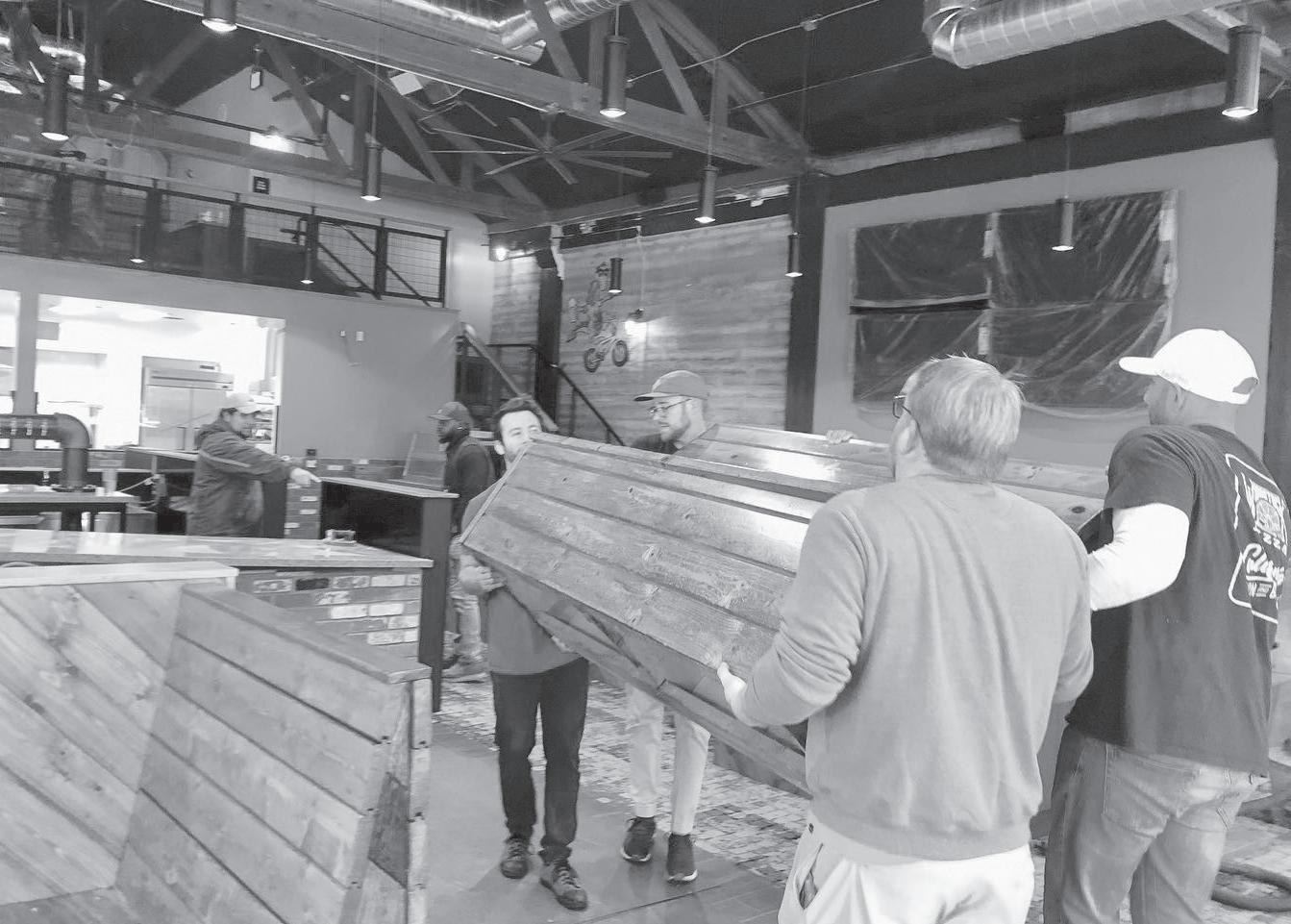
On Sunday, Dec. 11, the pizza company bid farewell to its longtime Davis restaurant at 219 G St. Since then, employees have been moving furniture, and helping set up in the new space across the street. It’s at 238 G St., which last housed the Thai restaurant and bar KetMoRee They hoped to be closed for just four days between the two.
Co-owner Laura Ambrose said the new space underwent three inspections on Thursday, with officials from the fire marshal, county health department, and city building office. Each gave them work to do.
“We did everything they demanded and more, and it wasn’t enough,” Ambrose said Thursday evening, after returning home to San Diego, the headquarters of their pizza chain. “It’s a list of little projects, like caulking. From what I understand, our contractor finished the list today.”
She said there was an outside chance that they could get inspections on Friday, allowing them to open for dinner that day. Otherwise, they’re looking to open before Christmas.
“We will persevere, but it’s Christmas, and I’m celebrating,” she said with a sigh.
She and her husband Jeff were trying to figure out what to do about the 80-plus Davis employees, and logistics like, “Do we order food? Do we not order food?”
It’s been a big push to finish. Construction workers were still jackhammering the sidewalk concrete early in the week, on an inspector’s orders to fix the area near the employee entrance on Third Street. When I toured the inside on Monday, workers were still building display shelves in the mezzanine, and installing appliances, countertops and seating.
It’s a beautiful space. The
interior north wall has a large Davis mural, which highlights bikes, sunflowers, the train depot, the UC Davis water tower and mustang and, of course, pizza. The southeast corner of the pizzeria has a musical mural behind a dedicated stage. Long Beach muralist Christian Garcia’s work can be found in the Chico Woodstock’s too.
A bar, featuring a 24-tap, double-sided beer tower, is in the center of the restaurant, where they’ll also serve wine, cocktails and slushies. From there or elsewhere on the ground floor, patrons can witness the kitchen crew in action, thanks to interior windows. With the increased capacity of its ovens, pizza wait times should be reduced, Ambrose said.
To replicate some Chico restaurant upgrades, it planned chandeliers made of bicycle rims and imitation red Solo cups, but those were nixed by inspectors. There’s an indoor water-vapor fireplace near seating at the northwest corner of the eatery. Toward the back wall of the restaurant there’s a “wainscoting” of used skateboard decks, donated by The Vault Board Shop across G street.
And there are lots of TVs. It may be the place to be for the Super Bowl.
Outside improvements are still to come, and awaiting approval by planners. They want to paint the building white (but save the butterfly mural along Third Street). That, along with some black-and-white striped awnings, is an effort to restore the building to its original streamline moderne style of art deco architecture.
Plans were for a soft opening
this month and a grand opening in January, after UC Davis students return. Hours remain 11 a.m. to midnight Sundays through Thursdays, and 11 a.m. to 2 a.m. Fridays and Saturdays.
Hikari Sushi & Omakase will update its concept for the new year. The restaurant’s high-end chef’s choice sushi dinners are so successful that its owners plan to convert to that business model full-time. Today, it operates as a regular, a la carte sushi restaurant during the weekdays.
With a commitment to sustainable seafood, omakase is a fine dining event where the chef builds a menu based on availability, ensuring freshness. Diners witness their food being made, with the chef explaining the ingredients and methods for some 16 to 19 little courses.
“Our weekends are going pretty well, and weekdays are like a roller coaster ride,” said sushi chef Sithu Tun, who runs the restaurant with his wife Zin Khine. “We need our identity as an omakase restaurant. … Our current business is making a lot of people confused.”
Now that it has a license to sell beer, wine and sake, they’ll offer sake pairing during the dinners.
Its sake selection is best but there’s also Sapporo lager and a white wine. Plans also include classes to teach people about sushi (they are big on sustainability) and sake. The classes will be offered on Sundays.
Tun is excited about the change. “We just hired an omakase chef who previously worked for Michelin-starred restaurants,” he said.
Though the exact date hasn’t been set, the change will happen the first week in January. The restaurant is at 110 F St., Suite A. There will be two seatings every Wednesday through Saturday: from 4:30 to 6:30 p.m., and from 7:30 to 9:30 p.m.
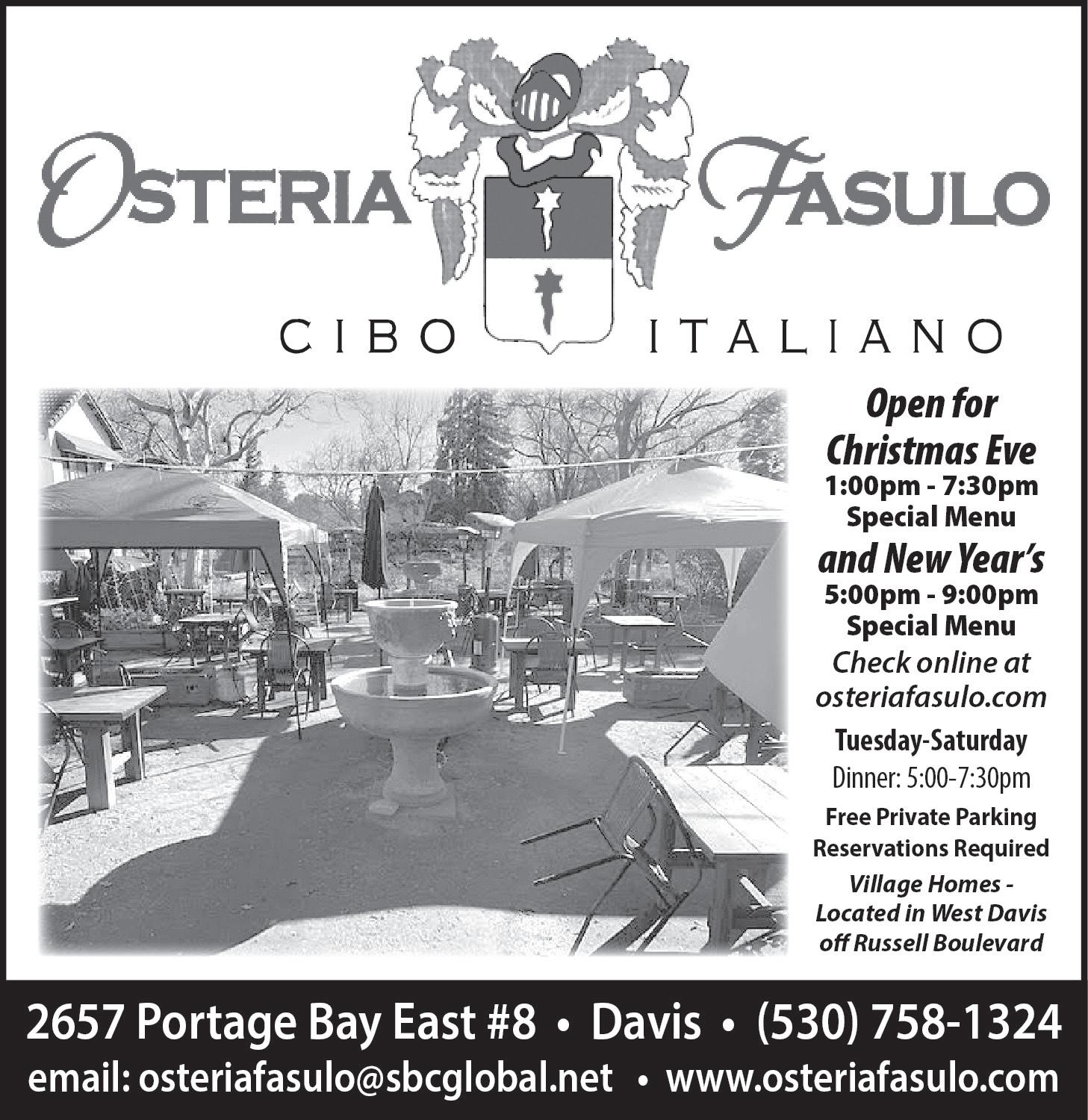
Bull ’N Mouth, the American restaurant filling the former De Vere’s Irish Pub space at 217 E St., is still working through the permitting process.
“We don't have any updates on timing but are excited and looking forward to opening in the near future,” said Brandon Keith, company president for World Famous Fare, which owns several restaurants in Northern California and Nevada, including Fanny Ann’s in Old Sacramento and Madison Bear Garden in Chico. “We will

update you if/when anything of note comes our way.”
Work is still going strong at Mamma, the Italian food restaurant and deli filling the former Bistro 33 and City Hall Tavern sites at 226 F St. The owners hope to have it open early next year.
“The team is in there working every day,” co-owner Michael Galyen said. “It’s coming along nicely. I’ll let you know when we firm up some dates.”
Trifecta Beauty opened in September at 1411 W. Covell Blvd., Suite 104, in The Marketplace. I mentioned it briefly when it opened, but here are some more details ...
Pamela Garcia and her daughters Marielle and Gabrielle Garcia renovated the space, formerly Davis Nails.
Pamela worked in the medical field on and off for two decades while raising her daughters. During the pandemic, she went back to school to become an esthetician and start the business with her girls.
Marielle is a nail tech. She is also college student working toward a business administration degree. Gabrielle is trained as an esthetician and nail tech. For more info, visit its website at https://sites.google.com/view/ trifectabeauty/home.
Missed a column? Wondering when a new Davis business is opening? Check my paywall-free Google spreadsheet, which includes more than 325 Davis businesses coming or going. It’s at https://bit.ly/DavisBusinesses. Look for the tabs for Restaurants Open, Restaurants Closed, Coming Soon and more.

— Wendy Weitzel is a Davis writer and editor. Her column runs on Sundays. Check for frequent updates on her Comings & Goings Facebook and Instagram pages. If you know of a business coming or going in the area, email her at wendyedit@gmail. com

The city of Davis expects to award up to $1.2 million to provide affordable housing and social services to low and moderate-income Davis residents in the coming year thanks to the city’s share of Federal Community Development Block Grant (CDBG) and Housing Investment Partnerships (HOME) programs.
The funds come from the U.S. Department of Housing and Urban Development Department and a portion is awarded by the city to local nonprofit organizations that deliver critically needed services, such as meals, shelter, transportation, healthcare, elder care, mental health and homeless services and housing to low-income residents.
The city expects to receive approximately $780,000 in CDBG and $460,000 in HOME funds for the fiscal year 20232024, although exact
amounts will not be known for several months (once Congress appropriates funding for these grant programs). These funds can be used for affordable housing and other community development activities, for vital public service projects and for removal of architectural barriers.
Some of the organizations that have received funding in the past include Yolo Hospice, Davis Community Meals, Short-Term Emergency Aid Committee, Meals on Wheels, Yolo County Children’s Alliance and Yolo Community Care
Continuum. Only 15% of anticipated CDBG grant funds are available for public services. Funds are also spent to make public facilities, sidewalks, crosswalks and parks more accessible to those with disabilities and to develop or improve affordable housing.
An "Applicant Workshop" webinar will be hosted by the city of Davis at 10 a.m. Tuesday, Jan. 10, via Zoom. The city will post the webinar link will be provided on its website, in the Spotlight section on the left-hand side of the www. cityofdavis.org home page.
All applicants are strongly encouraged to attend this workshop. The workshop is expected to last approximately an hour.
Grant applications are due to the city by 5 p.m. Jan. 24, via email to tcovell@cityofdavis.org. The city’s Social Services Commission will recommend
funding amounts in March and in April, the City Council is expected to decide which groups will receive grants. Applications can be downloaded from the city’s website by clicking the “CDBG/ HOME Programs” link at www.cityofdavis.org.
For information, contact


Tara Covell, grantsmanagement analyst, City Manager’s Office, at 530757-5623.

Davis native Steven James Tingus passed away Saturday, Dec. 3, 2022 in Los Angeles at the age of 59. He became one of the first students with disabilities mainstreamed into the California public school system in 1974. He attended Davis public schools and earned his Ph.D. from UC Davis.
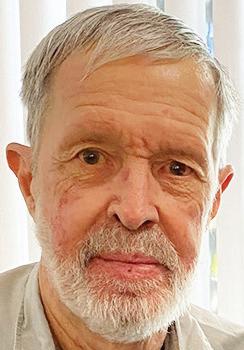
Appointed by Gov. Pete Wilson, Tingus was a health care policy analyst for the California Department of Health Services. Under President George W. Bush he served six years as director of the National Institute on Disability and Rehabilitation Research, and two years as deputy assistant secretary for planning and evaluation at the U.S. Department of Health and Human Services. Services will be at at the Greek Orthodox Church of the Annunciation in Sacramento. A Trisagion will begin at 6 p.m. Wednesday, Dec. 21, and the funeral at 1 p.m. Thursday, Dec. 22. A reception in celebration of Tingus’ Life will be in early 2023.
6, 1937 — Nov. 25, 2022
Marlene Dunaway passed from this life on the morning of Nov. 25, 2022.
Marlene was born in Philadelphia on July 6, 1937. She was the youngest of five children born to Barney and Etta.
As a teen, she performed on radio shows. She received her bachelor’s degree and worked as an office administrator until her marriage to Ken Orman and the birth of Eve. Ken passed away and Marlene remarried Ray Dunaway, obtained a master’s in Education, and welcomed children Linda and Todd. Marlene and Ray raised their family in San Pedro. Marlene then began a career as a special education teacher. Marlene and Ray moved to Davis to retire and be near their children.
Marlene will be lovingly remembered for her exuberance with life, her curiosity to know people in her Davis communities, and her celebratory spirit. Marlene had charm and cultivated style. She lived life on her own terms, perpetually resilient and optimistic.
She had a keen interest in the real lived experience of human triumph over adversity. She lived in the same way, overcoming her sight limitations by cycling, dancing, drumming, learning languages, book club, dinner club, singing and playing her ukulele, events with university farm circle, and attending local arts with her many friends. She loved parties, dancing and all kinds of foods. Marlene was a resounding yes for life.
She is proceeded by her great love and husband, Ray, and will be interred with him. She is survived by children Eve, Linda and Todd; and grandchildren Tyler, Nate, Jacob and Beka, and their spouses and partners.
An internment and memorial service will begin at 3 p.m. Wednesday, Dec. 21, at the gravesite in Davis Memorial Cemetery. The service is open to all to pay their respects, remember and honor this remarkable powerful, positive woman — beloved mother, grandmother and cherished friend.
Mary Russick Myers, 70, of Wake Forest, N.C., passed away Thursday morning, Dec. 8, 2022, at her home.
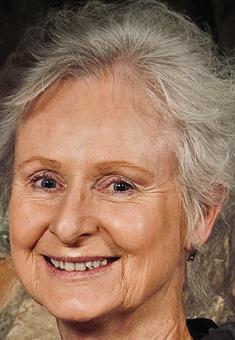
Mary Myers was born on Dec. 21, 1951, to Joan Young Russick and Robert Fred Russick. She was the first of six children.
Preceded in death by her parents, Mary is survived by her husband of 42 years, Donald Foster Myers of Wake Forest; sister Anne Pettit of Rolesville, N.C.; brother Bob Russick (Gail) of Williams; sister Jane Russick of Westminster, Colo.; sister Meg Heath (Chuck) of Summerville, S.C.; her sister Sue Fenwick (Jeff) of Springfield, Mo.; cousins Lynne Lawlor and David Luce of Englewood, Colo., and Richmond, respectively; and many more aunts, uncles, cousins, and her beloved nieces and nephews.
Those who knew her will remember her for her creativity, and her skill at telling jokes and singing songs, from campfire songs to opera. One of her nieces remembers her for teaching her how to flip the bird properly. She was talented in music and theater and performed with the Davis Comic Opera Company, and multiple choirs and chorales wherever she lived. Mary decorated cakes and excelled at painting and needlepoint and
embroidery.
She enjoyed sharing her husband’s passion for roses and was a competition judge for the American Rose Society. They loved growing roses and arranging them, and together with Don, they won many rose show competitions.
Mary had a radiant smile and a captivating personality. She was a loving and dedicated wife, sister, and friend, and will be remembered by so many for her fabulous bohemian style, her many talents, her wit, and her sense of humor. She will be sorely missed and never forgotten.
A memorial service will be held at 11 o’clock, Thursday morning, Jan. 12, at St. John’s Episcopal Church, 834 Durham Road in Wake Forest. Friends may visit with the family immediately following services at the church.
In lieu of flowers, memorial contributions can be made to the American Rose Society, P.O. Box 30000, Shreveport, LA 71130-0030, or www.rose.org/donate.
Arrangements by Clancy Strickland Wheeler Funeral Home, 1051 Durham Road, Wake Forest, N.C., 919-556-7400, www.cswfuneralhome.com.
The Enterprise publishes brief death notices free of charge. These include name, age, city of residence, occupation, date of death and funeral/memorial information. Paid-for obituaries allow for controlled content with the option for photos. Obituaries will be edited for style and grammar. Submissions may be made via www.davisenterprise.com/obit-form/. For further information about paid obituaries or free death notices, call 530-756-0800.
Bill (Will) Marshall, a longtime resident of Davis, passed away after a short illness. He was surrounded by his wife and children. Bill was a graduate of UC Davis, department of engineering.
He went on to work as a civil engineer for city governments, working in the Department of Public Works for the city of Davis for more than 30 years.
Upon retirement, he worked as a surveyor for several years. In whatever role Bill took on in his life, he was a mentor and teacher.
Bill was an active member of St. James Parish in Davis. He was active in the Davis community in many ways. He was an AYSO soccer referee for several years when his children were young. He was an election poll worker for more than two decades. He served on the Davis Cemetery Board.
Bill was very generous to many charities and reached out to the unsheltered, giving $2 bills for luck and treating those he saw in need to a meal. Each year Bill and his family would
adopt a family for the STEAC Holiday Program.

Bill was an Eagle Scout. He enjoyed camping, backpacking and hiking. Most of all, he enjoyed family time and had a great love of dogs. He will be missed by his wife Nina, children William, Susan and Stephen (Jenna) and his granddaughter, along with extended family and dear friends. A rosary will begin at 7 p.m. Monday evening, Dec. 19, at the Smith Funeral Home, 116 D Street.
The funeral mass will begin at 10 a.m. Tuesday, Dec. 20, at St. James Catholic Church, 1275 B St. in Davis, with a gravesite service for family and those who would like to attend, immediately following. A reception will be held at St. James Parish directly after the mass.
For the online obituary see www.smith-funerals. com.


Helen Ann (Mazetis)
Talley passed away peacefully on Nov. 30, 2022, at home in Davis. Born on Christmas Eve to Helen and Walter Mazetis in Luzerne, Pa., she grew up in Pennsylvania, but also loved sharing her childhood memories of living in Panama while her father was stationed there with the Army Corps of Engineers.
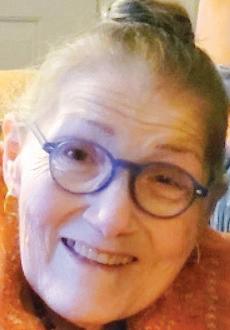
She lived an active life full of contributions to her family and her community. Helen served in various civilian administrative roles with the United States military, rising to be the Staff Assistant and Administrative Officer for the Army Science Board.
She was an organizational wonder and helped this important board run like clockwork. For her work, she received the Commander’s Award for Civilian Service from the Department of the Army.
While at the Army Science Board, she met
Wilson Talley. They were married in 1981 and remained together until his death in 2017. In addition to their love of each other, they shared a love of their family, books and cleanliness.
They enjoyed traveling and took trips to Alaska, Europe, Australia and Hawaii. They also frequently traveled to Virginia to visit with Helen’s daughter, Donna, her grandchildren, and greatgrandchildren.
After leaving government service, she remained active. Helen moved to California to be with Wilson in 1981 and lived in Oakland and Pleasanton prior to moving to Davis. In 1997, she founded a community bookstore, Second Edition, in the Montclair Village neighborhood of Oakland with her good friend Debi Echlin. The bookstore that they eventually renamed A Great Good Place for Books continues to provide a warm environment for
Helen was preceded in death by her parents and her husband, Wilson. She is survived by her brother, Jerry Mazetis, of Fort Belvoir, Va.; her children
Helen’s family wishes to express their gratitude to the kind and caring staff at Carlton Senior Living in Davis.
David lived among you as one of our homeless for years. But he was not born on the streets. A confluence of events, mental health, personal demons and ultimately addictions took him there. He lived a life he wouldn’t wish for others. However, even until his last moments, he knew he had a family who loved him, though that wasn't enough.
David was a complicated man, and descriptions of him will depend upon who you speak with. A rebel, caregiver, storyteller, son, brother, friend, a giver, artist, reader, and so much more. Those who understood and had the opportunity to enjoy the variety of these parts of David also accepted his mental health struggles. In various ways many of these people tried to assist him to help himself. On the path of his life, David was unable to pick up enough tools to make the difference.
David was known to many members of our Davis Police Department. Due to his history of camping, argumentative and drunk-in-public interactions with them, they were able to identify David, though he had no wallet or ID on him at the time of his death.

He was known, too, by the staff at the Yolo County Jail — behind whose bars, on different stays, David spent nearly three of his last 10 years. Most unfortunately and yet understandably, they did not always
have the opportunity to appreciate a fuller sense of the man underneath his anger and behavior. Their loss.
The Sutter Davis Hospital Emergency Room was also familiar with David. His mother worked as a nurse there and he would turn up at times as a patient after a drunk in public or agitated behavior admission. Sobered up by morning, he was known to ask her colleagues, “Don’t tell my mom.” With a laugh, they would assure him his secret was safe with them. But how could it be?
Often and kindly, they tried to encourage him to seek counseling, yet another tool he couldn’t pick up to use. David was not only an intermittent patient, he would also frequently stop by to say hello to his mom and others on the ER staff, often making everyone laugh. His humor, sparkling eyes and smile were enough to quell whatever sensibilities he might have unintentionally offended during some prior visit. Both David and his family thank this team of individuals for their thoughtfulness and care.
He was known to be a talker, occasionally a rambler, and his thoughts or take on things could as easily infuriate you one moment as make you laugh, think or cry the next.
David had a strong culinary streak and enjoyed preparing and sharing food with others. He appreciated opportunities to cook
up and sit down for a tasty meal with his brother. He was fond of ice cream, and his mother usually kept a small tub of it in her icebox waiting especially for him. Upon opening a fresh pint once, he called out, “Mom, I think you might have a rat living in your freezer!” Alarmed, his mother came to the kitchen to inspect his “evidence.” There were two spoonsized chunks missing from the top of the tub, obvious marks of the “taste test” she had snuck.
On future occasions, when it was David who snuck the bite, the freezer rat still got the blame. Recently, when his mother invited him out for a meal he initially declined, claiming he wasn’t hungry. After David overcame his reluctance, he proceeded to put away two hamburgers, an order of fries, and a chocolate shake. The two of them chatted and laughed. Though neither knew at the time, this would be their last shared meal.
From his youth, David was a reader. He read authors from Robert Jordan to Isabel Allende, John Steinbeck to Fyodor Dostoevsky and Alexander Dumas, and anything inbetween. He was sensitive to stories, their language, and the great themes developing across the pages. However, in the last few years, books did not hold the same fascination for him. He admitted having difficulty staying focused through the story. The last book he likely read was written and recently published by his younger brother Joshua. David was
always proud of his brother, and he was proud of this book.
David’s interest in movies and TV series was as diverse as his choice of books. From “Peaky Blinders” to “Harry Potter.” He often joined his mother to watch something they both enjoyed, always supplemented by snacks, a large bowl of popcorn, and a few Diet Pepsis.
Not many knew David was a talented visual artist. Self-taught and something of a doodler, he could channel a variety of sights and thoughts onto the page in ways that were frequently original and affecting, no matter the mood they conveyed. A Social Services manager with the Woodland Police Department, who became a caring friend to David for years, worked alongside him in art classes and social events.
In consolation to his grieving family, she offered a view of David’s brighter sides when she wrote that she preferred “to reflect on many fond memories of David, choosing to believe he is doing art, seeing life happily, laughing, feeling a sense of calm and visiting with all his friends that he made on the streets, who have also lost their lives before him.”
David spent lots of time at our local Respite Center and always appreciated with affection "the girls and staff” there. He appreciated the opportunity the center


Every five years, the county Hazard Mitigation Plan is updated and submitted to the Federal Emergency Management Agency (FEMA). The plan addresses threats from potential hazards and identifies possible strategies to reduce impacts.
Yolo County’s multijurisdictional plan is developed by the county, the cities of Davis, West Sacramento, Winters and Woodland, the Yocha Dehe Wintun Nation and Yolo County Housing. Hazard mitigation are actions taken to help reduce or

eliminate long-term risks caused by hazards or disasters, such as flooding, earthquake and wildfires. Hazard mitigation actions lead to building stronger, safer and smarter communities that are better able to reduce future damage when a disaster strikes.
The Yolo County Office of Emergency Services seeks community input on threats, hazards, and mitigation via a survey. The
survey will assist the planning team in assessing community hazard mitigation awareness and preparedness. The survey is online at https://hazard.
yolocounty.org. For information, contact the Yolo County Office of Emergency Services at 530-406-4930 or email at oes@yolocounty.org.


gave him and others to take a shower and get something decent to eat. Regardless of the situation, the center’s staff was always cheerful, welcoming, and supportive toward David, and he was grateful for them. They have shared that David was regularly thoughtful, funny, and respectful, and that he was an advocate for others, protective of women and "Underdogs" and anyone more vulnerable than him.
Some people knew David from seeing him around town. One of these people shared the following encounter: “I saw him at work last year when the cold winter shelter was at the migrant center. It is no secret that there was insufficient staff to manage the numbers that were staying at the shelter and that those staff were inadequately trained for the social issues they were asked to handle. I said I saw David at work because David was being the peacemaker in an attempt to fill that staffing shortage gap. I saw him trying to reason with argumentative guests to abide within the system and attempting to cool hot tempers. It was clear he was respected and that he had his own moral compass guiding him to do the right thing. He was a leader.” In these ways, in these environments, within his community and with these people, David often showed a caring soul.
Too few had the opportunity to see these positive sides of David, and he was often embarrassed by his uncontrolled behaviors.
Certainly at times David felt his behaviors were a heavy burden and he apologized often. But he also knew, deep down, that he was loved by his family during the easy times as well as during times of struggle. For years he battled to move forward through his precarious mental health, various personal demons and addictions. There were few periods where David could sustain a sense of direction, pride or self-image that allowed his positive qualities to shine. Yet too often he lacked the sense of calm or peacefulness that might lead to hope for a different future. David’s life was a daunting puzzle whose pieces he could never quite get to fit together.
David Peralta may have been unhoused, unnoticed and misunderstood. But he was never unloved. His mother will continue to look for him as she drives or walks these same Davis streets he called “home.”
And all his family and friends are hopeful that his restless soul is now at peace.
There will be a celebration of life for David from 1 to 4 p.m. Saturday, Jan. 14, at the University Park Inn and Suites, 1111 Russel Blvd. in Davis.
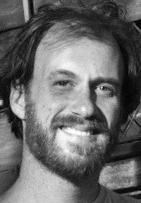
“Even more important, leadership and members together with the University deserve enormous credit for what they did to transform graduate education in the world’s most dynamic university system.”
In the talks surrounding the historic graduate student strike, the topic of a living wage repeatedly arises. What that means depends on who you talk to and under what circumstances.
“I think it probably means different things to different people,” UC Davis Chancellor Gary May said to The Enterprise before the announcement.
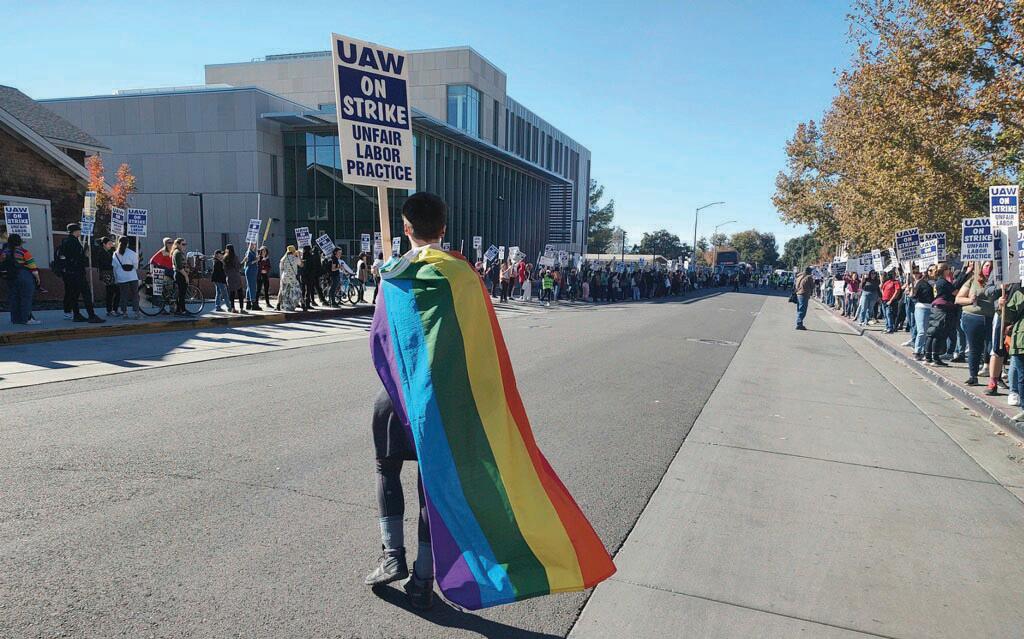
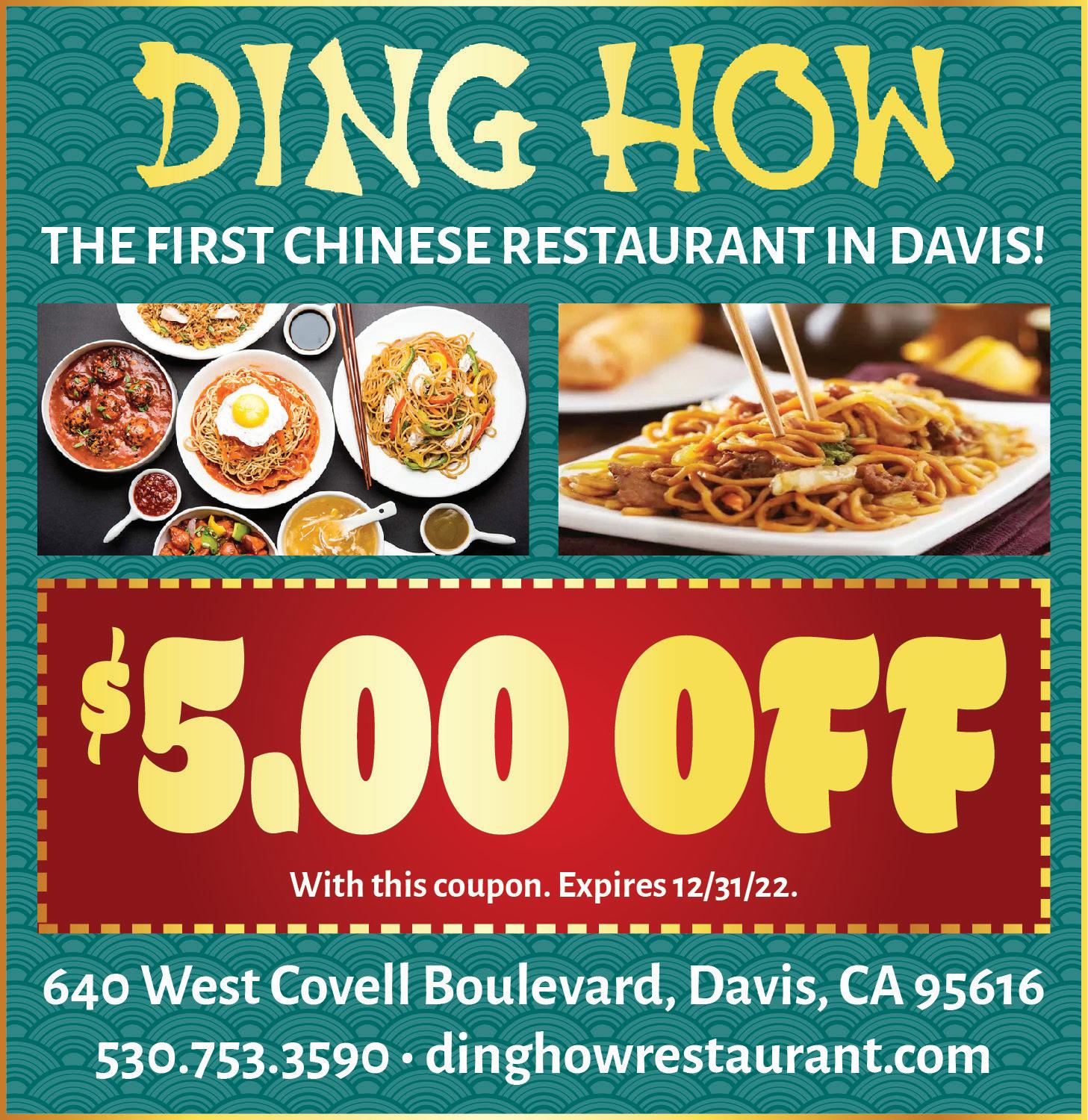
Responding to the question, “Can you live on what (the grad students) live on?” May responded, “Well, actually, I did because when I was a graduate student, I
made $11,000 a year.”
Adjusted for inflation, he said the $24,000 average part-time pay for students today is about the same as in his day.
May earned his undergraduate degree in electrical engineering in 1985 from the Georgia Institute of Technology and his master’s and doctoral degrees in electrical engineering and computer science from UC Berkeley in 1988 and 1991.
“Now, I will readily admit housing was not the same expense in 1991 when I graduated as it is now, so I think that an increase isn’t over. That’s what we’re working on now,” May said regarding negotiations that had been ongoing for months between the University of California and the United Auto Workers.
For the academic student employees and student researchers, the union had
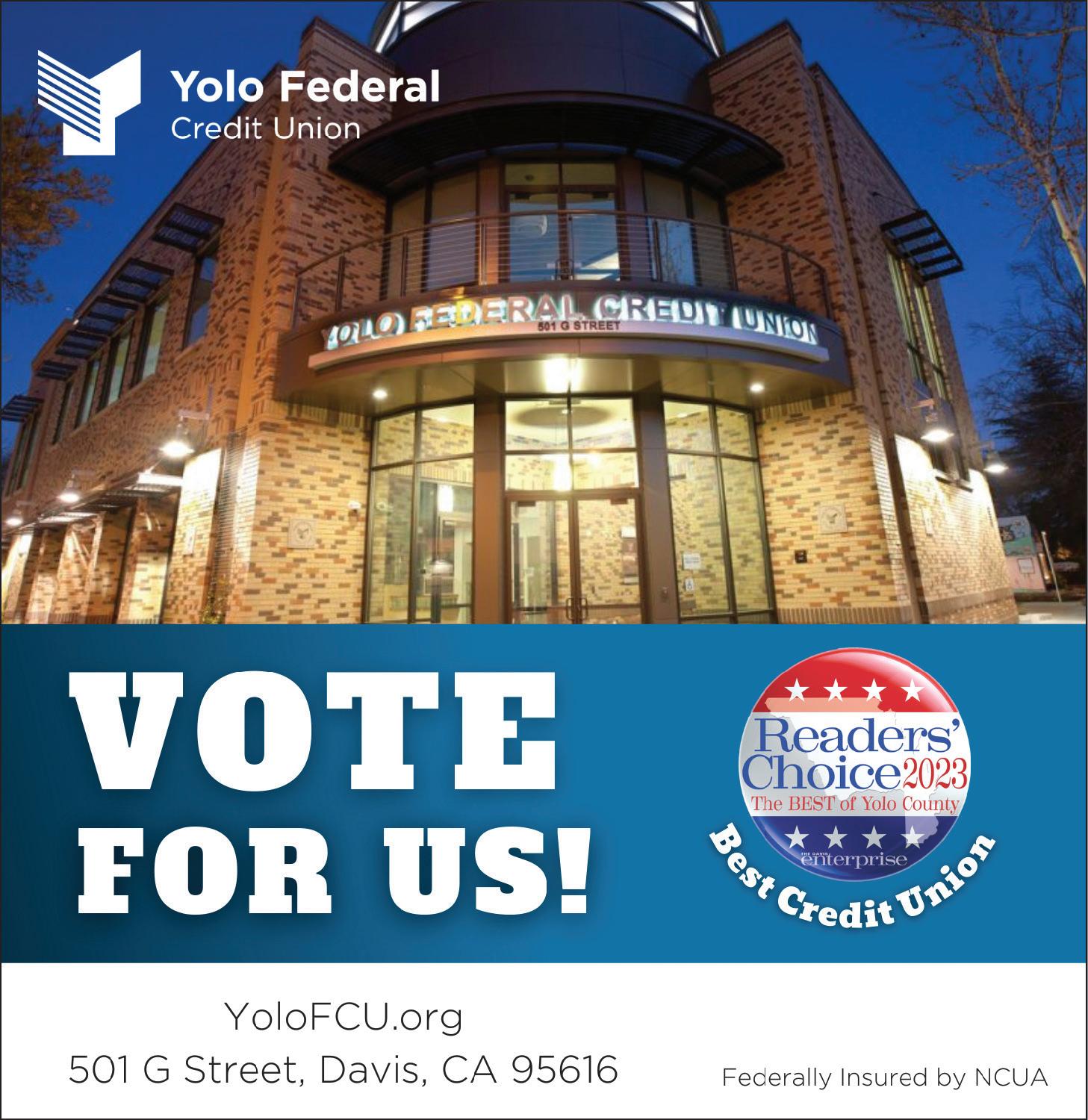

been demanding that pay be tied to housing costs with no cap. These students make up about 36,000 of the 48,000 strikers.
same time, this is not a permanent job. It’s temporary. It’s part-time.”
Describing the college experience as a jumping-off
point to the start of one’s career, the pay grad students earn is “just a way to sustain yourself while you’re getting to the point where you can start your career,” May said.
“Sometimes people lose sight of the fact that being a TA (teaching assistant) is not a career. It’s a stopgap measure to allow you to support yourself while you’re getting your education.”
He said UC still has the responsibility to provide a living wage, though he stopped short of what that means in dollars and cents.
“I’m not going to try to guess the right number, but you know, in addition to the stipend, there’s (assistance with) tuition, childcare, health care. It’s not like there’s no intention to be completely unfair to the GSRs (graduate student researchers) and ASEs (Academic Student Employees) and any others.”
Said the chancellor: “I think everyone agrees that the students should have enough to pay rent and to eat a healthy diet. But, at the
team has been playtesting concepts since then, resulting in a game that exhibits the percolation of a perfect blend of talent and creativity.
While it’s been oolong time in the making, Price said of the experience: “It was kind of like working at Disneyland.” They’d design the characters, scratch the design brief, steep over some ideas, and repeat. “Making characters like that was awesome,” he said. After all, if at first you don’t succeed, chai, chai again.
In the game description, it’s clear the characters are all up for the tall order: Cup Joe vanquishes all common enemy crumpets; Thermos shields all heroes from the Duchess enchantments; Little Miss Hot Shot slows King Tea’s progress, and Donette turns on all of the heroes’ Team Path powers across the entire board. Then there’s Dotty, the Honey Bee Queen, who though not a main player character, can help defeat King Tea. Named after Judd’s mom, Dotty is the game editor’s
favorite character.
Judd’s winning advice for heroes or villains? Pay attention and collaborate with your teammates. “It’s pretty evenly matched between heroes and villains, but there are a lot of small, nuanced advantages for each player in different scenarios, and using these could be the difference between winning and losing,” she said.
While the game involves strategy, it’s still light-hearted enough that the players don’t get too competitive and can have fun together, explains Judd.
A little advice: Just kettle down, kettle down.
“It reminds me of Dungeons & Dragons because we would roll the dice, and we’d just be getting into the story mode. We’d have the music going. We’d be teaming up,” said Price. “Sometimes it felt competitive. Like yeah, we’re almost there to the finish line and then oh, no, we have to start at the beginning, like halfway in and halfway out,” he said.
In the development process, Wedra solicited Lundholm, a talented local artist diagnosed with
schizophrenia, to use his artistic acrylic textures for background imagery on the board and play cards.
Players can stream music from the Coffee Time website when playing the game. Using artificial intelligence to create 11 Coffee Time custom tracks, Wright’s musical creativity for the game was brewed in the unlikeliest of places: Steve’s Pizza. For years, Wedra had wanted music for background accompaniment,
and lo and behold, his former coworker, Wright, is a talented musician.
Wedra plans to use music and artwork to flavor the Coffee Time brand. He’s created an arcade game in the style of Pac-Man.

“You’re just going left and right and dodging those guys while collecting as many donuts as possible,” he explained.
When it’s raining and overpouring, don’t worry, be frappé. For the remaining cold months
when family time runs aground, you can get oolong with Coffee Time’s help. A central perk of purchasing this game ($39.99) is that 5% of the proceeds benefit Purple Tree Café and the rest is split between each of the game’s contributors. This Davis nonprofit employs people with disabilities to make and sell vegan baked goods at the Davis Farmers Market and other events. It brings people with and without disabilities together through music and art.
The game won’t be available until early next year when a grand reveal at Davis Cards and Games will be announced. If you want to pre-order Coffee Time, contact the sales team at playcoffeetime@yahoo.com.
Provide your first and last name, the number of copies desired, your address, and your phone number.
Visit Coffee Time on the web at www.playcoffeetime.com.
— Contact Monica Stark at monica@davisenterprise.net.


The author thanks Coffee Affection blog for help with all of the coffee puns.

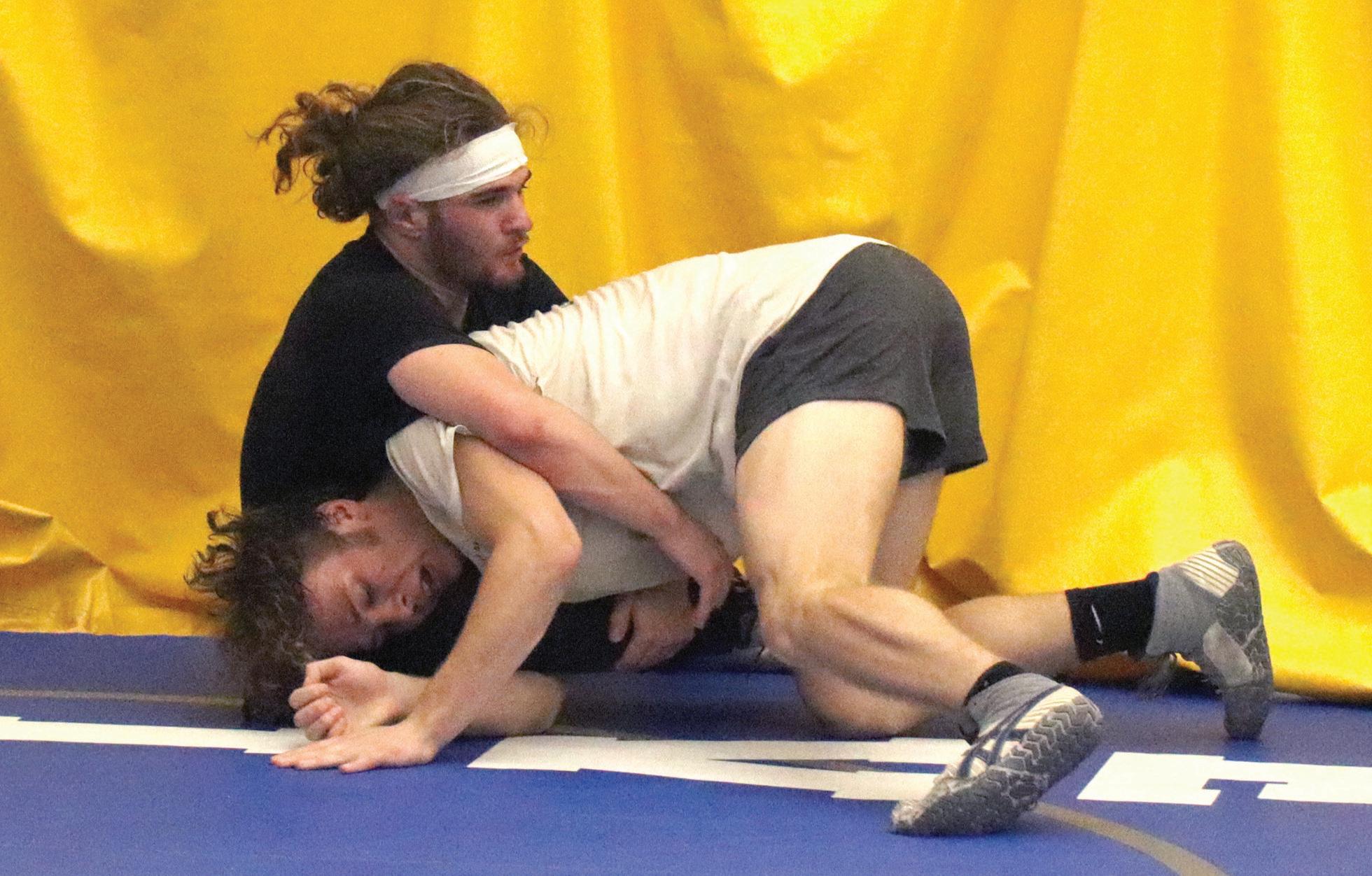
Davis High wrestling head coach John Rosendale has many reasons to smile.
Not because Christmas is just one week away. However, he does have many presents in the form of many wrestlers returning this season.
Here’s a look at the teams.
Josh Prudhomme (140-pounds), a senior, starts off the list of returning Blue Devils grapplers.
TJ Mueller (145), a junior, and Sam Reising (160), a senior, are part of DHS’ middle weight division.
Rosendale is very high on Reising, who recently placed at the Curt Mettler Invitational at Elk Grove High last weekend. Reising went 3-0 with three pins to win the championship of his
weight class. It’s a big improvement from last season, when Reising went 0-2 and was eliminated from the invitational.
“He just absolutely dominated,” said Rosendale of Reising’s performance at this year’s invitational. “A huge improvement. It was just insane.”
Francisco Castillo-Brown (170), Ian Greenway (182), Eli Tweddale (195), John Bork (220) and AJ Hasson (heavyweight) are juniors competing in the upper weight division.
Greenway also performed well at the Curt Mettler Invitational, which was the first time he ever placed at a varsity tournament.
“That was super exciting not just to see Sam dominate the competition, but see Ian place at this tournament, and place at a real hard tournament for the first time,” Rosendale said. “That was exciting.”
See PIN, Page B4

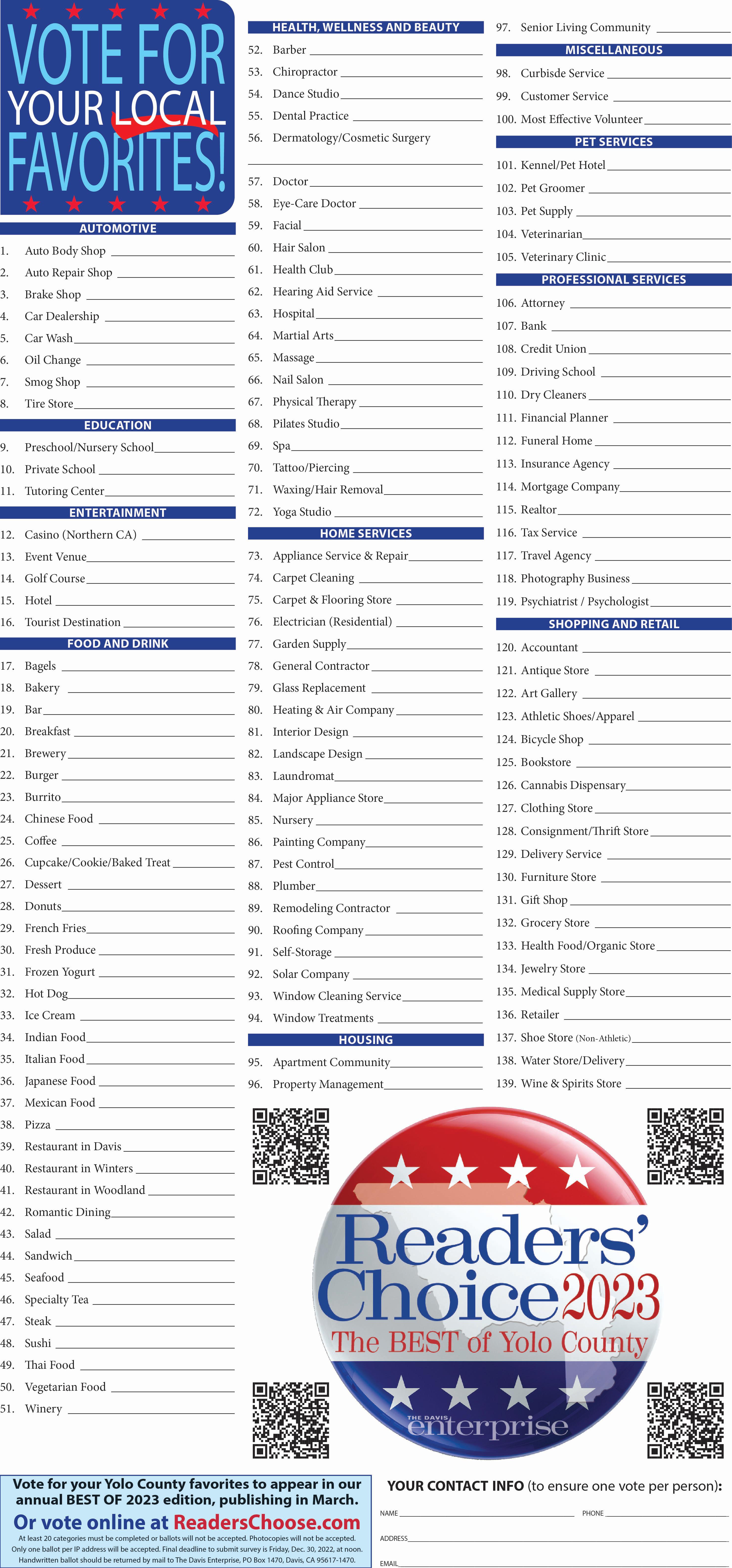



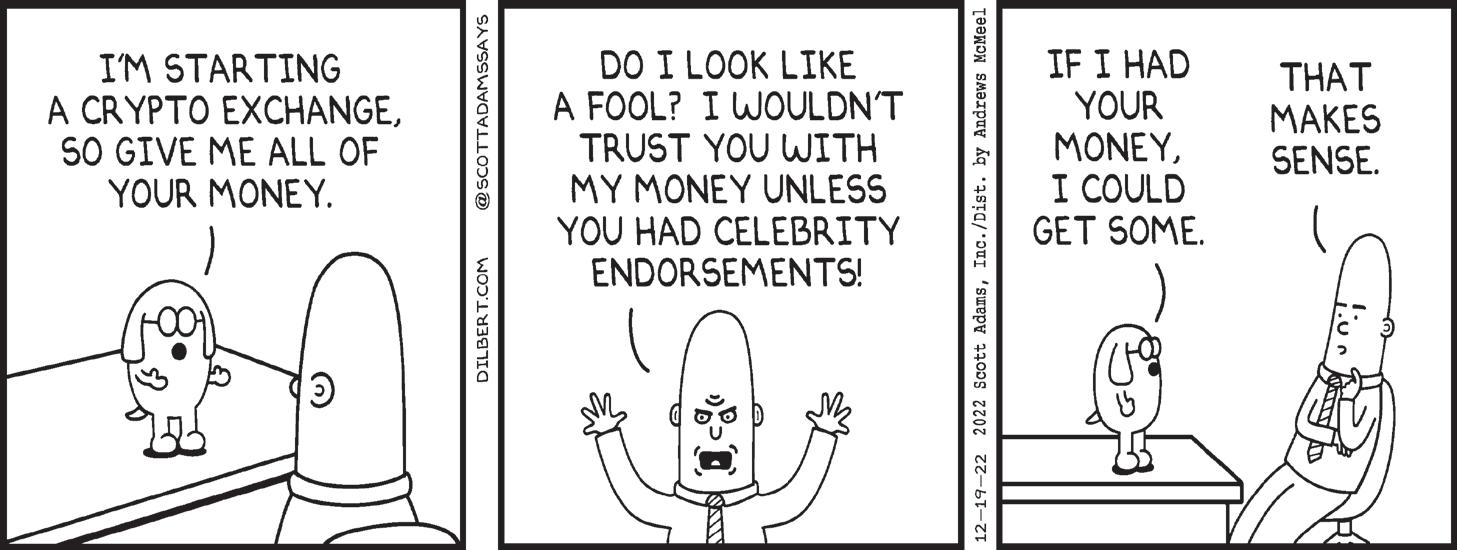
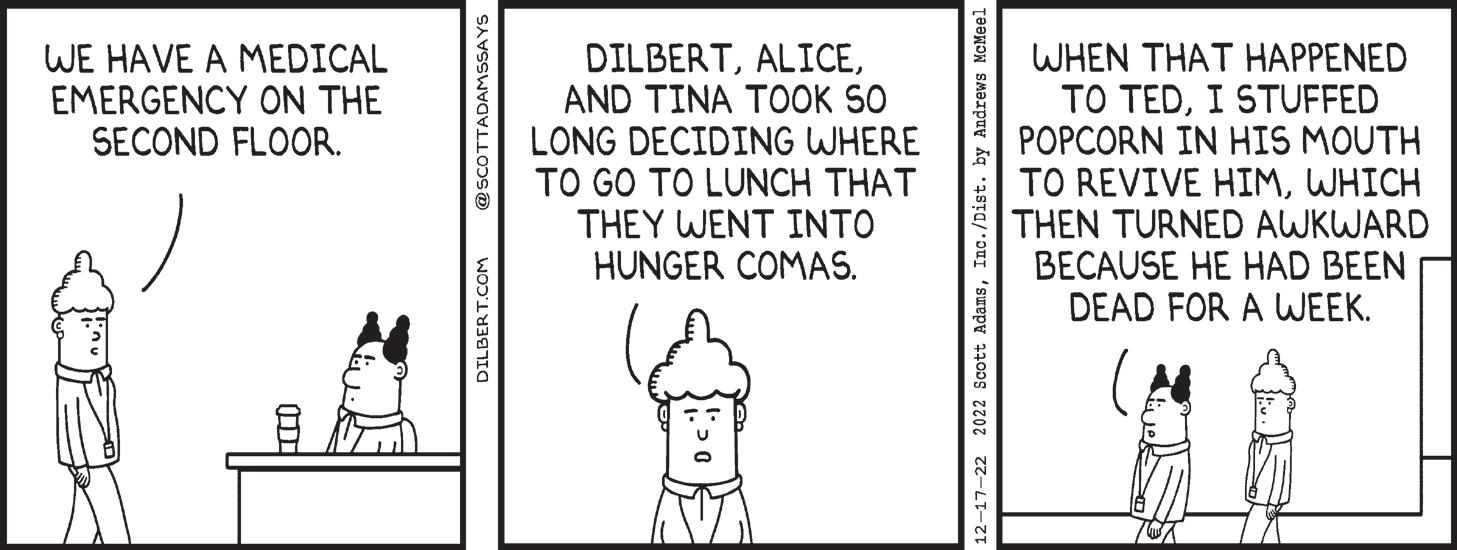
 By Charles M. Schulz
By Charles M. Schulz




Note to NFL and college football rules makers for the 2023 season.
When a game goes into overtime, teams should have to attempt a 2-point try following any touchdown. Kickers may still be employed for field goal attempts.
Makes for a more satisfying conclusion.
n Men’s college basketball arbiters should strongly consider four 10-minute quarters instead of the current 20-minute halves. The quarter system has worked well in both the WNBA and all levels of women’s college hoops.
*Monumental signings bring with it monumental expectations.
The San Francisco Giants will pay shortstop Carlos Correa $350 million over the next 13 years. Correa, now 28, is expected to be the new “face” of the team, which hasn’t had one since Buster Posey left the clubhouse for the executive suite as a franchise part owner.
While the Correa signing has attracted nationwide scrutiny, pro and con, the Giants made two other less-heralded moves to bolster the pitching staff. Ross Stripling, most recently with Toronto, is coming to San Francisco, as is Sean Manaea, the former Oakland A’s starter, who spent last season with San Diego.
Carlos Rodon bolted the Giants for the New York Yankees after one season, so the rotation will be headed up by Logan Webb, with Stripling, Manaea, Anthony DeSclafani, Alex Cobb, Alex Wood and Jakob Junis all vying for time.
As rotations go, not A-1 but far from the bottom.
n The untimely death of Mississippi State head coach Mike Leach shocked everyone in college football. Leach previously coached at Texas Tech and Washington State and won everywhere he went.
Good friend Bill Stevens, a former Sacramento Kings and UC Davis staffer, was especially close with Leach at WSU.
“I was fortunate to spend eight years working with Coach Leach and there were so many memorable experiences we shared,” Stevens said.
“Mike was unique, both as a person and as a coach and one of the most inter-
The UC Davis baseball’s schedule for the 2023 season is officially set, as announced by second-year head coach Tommy Nicholson in accordance with the Big West Conference.
The Aggies’ 83rd season of competition on the diamond opens up with a four-game home series against Utah Valley spanning from Friday, Feb. 17 to Sunday, Feb. 19.
After competing in just 41 games this past season, the UCD slate is composed of 57 games and 26 home contests at Dobbins Stadium.
This is the 38th season the Aggies will
be competing at Phil Swimley Field at Dobbins Stadium.
The schedule features 21 different teams; highlighted by an always competitive Big West Schedule; and six games against two different 2022 NCAA Tournament teams, UCLA and fellow conference member UC Santa Barbara.
UC Davis will be playing three different Power-5 schools as part of the schedule with Pac-12 schools, Cal Berkeley, UCLA and Arizona State all listed as opponents.
esting individuals I have ever met.
“He was an innovative coach and re-energized Washington State football, taking us to five straight bowl games, a first in program history. He was a lifelong learner, curious about anything and everything, doing things his own way. His impact on college football is undeniable and he will be terribly missed.”
When the Pac-12 held its annual football media days prior to the season, most coaches would deliver the tired blahblah-blah coaches are famous for. Each would be asked for an ‘opening statement’.
Leach would declare, “I don’t have an opening statement. Bring on the questions.” Which always were about anything but football. A good man gone way too soon.
n Washington Capitals forward Alex Ovechkin scored his 800th NHL goal on Dec. 13.
‘Ovi’ is within shouting distance of Wayne Gretzky’s 894 career goals, a mark previously thought untouchable.
Ever the marketer, Ovechkin and his marketing team, the NHL and NHLPA have copyrighted ‘THEGR8CHASE’ slogan as part of the campaign. Ovechkin wears No. 8.
If he continues to score goals at his present pace, he would catch Gretzky sometime in 2024-25.
n Belated congratulations to new Idaho State football head coach Cody Hawkins. He has a difficult rebuild in front of him but his innovative playcalling at UC Davis will help speed the process.
n Hawkins’ predecessor as Ags offensive coordinator, Tim Plough, will now work in the Pac-12 as tight ends coach at Cal.
n It says here Stanford made a great hire in choosing Troy Taylor to succeed David Shaw as head football coach. Classy individuals both.
n The bowl game barrage began Saturday with the usual assortment of strange names, sponsors, etc. Jimmy Kimmel even has a game named after him. For reasons no one can fathom.
n France or Argentina for the World Cup? The match is today at 6 a.m. on FOX.
The longtime radio and television color man on UC Davis football broadcasts, Doug Kelly is director of communications for Battlefields2Ballfields and managing general partner of Kelly & Associates. Contact him at DKelly1416@ aol.com.

Ian Best, a sophomore, will compete in the 182 and 195-pound classes. Best was on the team last year, but various injuries kept him sidelined most of the season.
Newcomers for the Blue Devils are freshman Flynn Smith-Lottritz, who will bounce between the 106 and 113-pound classes.
Rosendale noted that some guys are nursing early season injuries.
Upperclassmen also return on the girls’ side this season.
Juana Francesca-Peralta (106) is a senior. Andrea Gonzalez (116), Avangeline Turner (150) and Zoe Martinez (143) are juniors.
Brooklin Cienfuegos (121) is a sophomore. Natalie Foreman (126) is another sophomore on the squad. Cienfuegos and Gonzalez were consolation championship winners at the Roger Briones Invite in San Lenardo last weekend.
“She’s a brand-new wrestler, and she’s been wrestling really well,” said Rosendale of Foreman, “and working really hard in the practice room.”
Rosendale has a group of freshmen who competed at the middle school level in recent years.
Mia Perez (101), Yoriko Campero and Karina Michel headline the class of 2026.
Rosendale feels that
those wrestlers have put in their work in the practice room since the start of the season and preparing prior to the start of the season have earned their way to becoming starters.
“They’ve been doing all the things I’ve asked them to do,” Rosendale said.
“Show up to practice on time, work as hard as you can for a couple of hours at practice.”
The Blue Devils coach feels that the boys’ strengths will be the middle and upper weight classes. The girls should be very strong at the light and middle classes.
“We should have a pretty tough lineup,” Rosendale said. “It’s really nice to see how one year a kid not win any matches, only wins one match at a tournament and a year later comes back placing fifth or sixth or seventh.
“Then their senior year, they’re dominating their weight class.”
“I’m looking forward to the league season,” said Rosendale of DHS competing in the Delta League. “Really watching how these kids do.”
Davis will host only one match this winter season. That will be on Jan. 24 when Pleasant Grove and Cosumnes Oaks arrive to the DHS campus for a trimeet.
“Both of those duals are very winnable,” Rosendale said. “We should be very competitive against both of those schools. I highly encourage as many kids
and spectators as possible to show up.”
Elk Grove and Franklin are the league teams to beat again this season, Rosendale stated.
“They usually put out a pretty good squad of wrestlers,” Rosendale said. “I, obviously, would love to beat those two schools. We’re still a smaller wrestling program and we’re working on changing that. I think we will be very competitive against Sheldon.”
Rosendale has a motto for his Blue Devil wrestlers that will stretch from now until, he hopes, there are some competing at the California Interscholastic Federation State Championships in Bakersfield in March.
“Compete and then reflect on how we did and improve and repeat the whole process again,” said Rosendale, “and we’re going to do that over again. The Davis wrestling program is buying into that process... not just winning matches but improving every day.
“If we can manage our health well, we can manage our season well and manage our improvement well, I think we have a good chance of bringing more kids to the state tournament than we have ever brought before.”
— Contact Mike Bush at mike@davisenter prise.net. Follow on Twitter: @MBDavisSports.

UC Davis head softball coach Erin Thorpe released the 2023 schedule on Wednesday.
The schedule features 54 games with 25 of those coming in Big West Conference play.
The Aggies will take part in four regular season tournaments and play host to two this upcoming spring.
From Feb. 10-13, the Aggies will take on, and host, University of the Pacific, Rutgers University, Santa Clara University, Seattle University and Utah Valley University at La Rue Field.
The second tournament comes March 3-5, as the Aggies host Alabama State University, Saint Mary’s College, Siena University and Southern Utah University at the Capital Classic.
The Aggies will travel to Fresno to the part in the DeMarini Invitational as they take on Idaho State, Southern Utah and host Fresno State from Feb.

24 to 26.
The final tournament comes March 10-11 as the Aggies take part in the SVC Classic hosted by San Jose State and Santa Clara University.
Added into their non-conference schedule are two Causeway Cup games against Sacramento State — the first coming on Feb. 9 in Sacramento and March 5 at La Rue Field.
The Aggies will also hit the road to take on Stanford University on March 1 and will host California on March 7.
Then UCD will open Big West Conference schedule on March 17-18 with a three-game series against CSU Fullerton in Fullerton and will wrap up their conference schedule with a threegame series in Hawaii on May 11-12.
The Aggies will host, as a part of Big West Conference play, Long Beach State on March 25-26, UC Riverside on April 7-8, UC San Diego on April 22-23 and Cal Poly San Luis Obispo on May 6-7.
PIN:
strong in boys middleheavyweights; girls light-middle
Things are a’changing at the Unitarian Universalist Church of Davis, 27074 Patwin Road.
Organized in 1954 by a small group of liberalminded parents who desired meaningful religious education for their children, the fellowship gathered variously in the Chestnut Park Roundhouse and the Girl Scout Cabin. Many of them had met while working at the Davis Parent Nursery School co-op or on campus where they held faculty/ staff positions. By 1962, the Fellowship received approval to become a Unitarian Universalist Church and called their first minister, the Rev. Bob Senghas, the next year.
The Yolo Community Foundation (YCF) announced the recipients of the Davis Arts & Culture Grant — 20 local nonprofit organizations that focus on arts and culture and primarily serve residents of the city of Davis. The Davis Arts & Culture Grant was funded by the city of Davis from the American Rescue Plan Act.
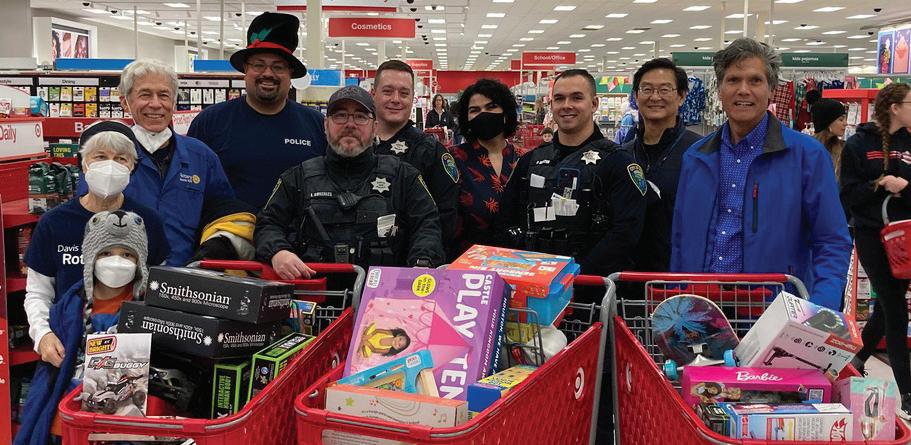
The goal of the Davis Arts & Culture Grant is to stabilize the city’s nonprofit arts and culture sector, which saw significant negative economic impacts due to the pandemic. The grants intend to help eligible non-profits on the path
back to financial sustainability. The Yolo Community Foundation in 2023 will also provide nonfinancial capacity building support (e.g., training programs) that serve the same objective. The Davis Arts & Culture Grant is a onetime grant program.
Some of the Davis Arts & Culture Grant recipients are as follows:
n Davis Arts Center, $45,000
n Davis Media Access, $45,000
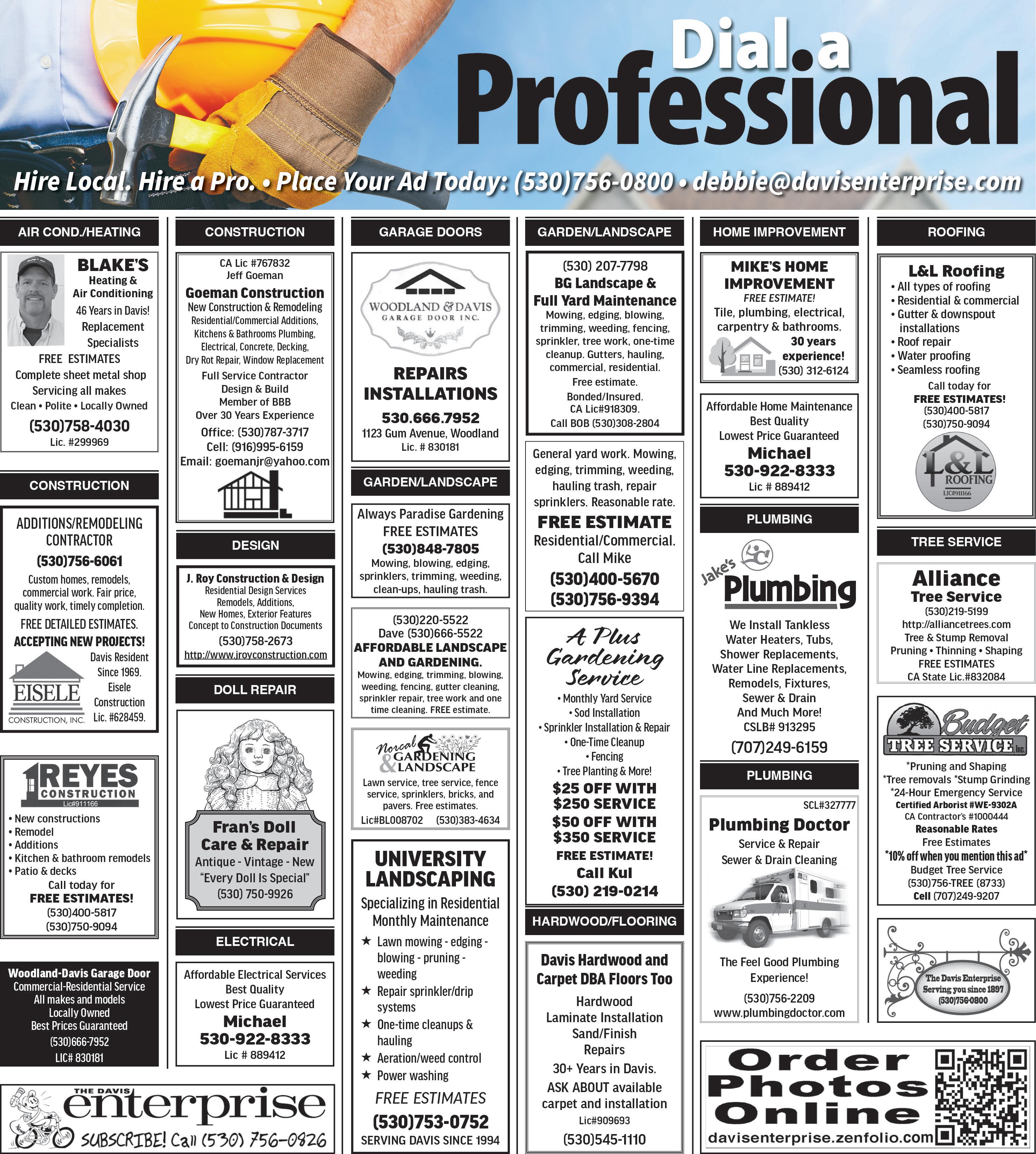
n Davis Musical Theatre Company, $45,000
n Pence Gallery Association, $45,000
n Bike City Theatre Company, $30,000
n Davis Shakespeare Ensemble, $30,000
n Imagining America (University of California, Davis), $30,000
n Acme Theatre Company, $20,000
n Applegate Dance Company, $20,000
n Davis Community Chorale, $20,000
n Music Only Makes Sense, $20,000
n Mariachi Puente, $15,000
To learn more about the Yolo Community Foundation, visit www.yolocf.org.
Fast forward 60 years through six additional ministers, capital campaigns and ground-breaking projects, the current church sanctuary, office, library and religious education building stand on a spacious eight-acre parcel located on Patwin Road just west of the Davis city limits. In addition to church activities, these facilities may be rented for private events such as recitals, social gatherings, conferences and retreats.
Senior Minister Rev. Beth Banks was called in 2000 and ably served the church until 2022 when she retired. Well known for her interfaith work in the community and support of undocumented students on the UCD campus, Banks retired in June and was feted by multiple celebratory parties in her honor.
The Rev. Morgan McLean, minister of congregational life, served from 2017 to 2022. McLean took the lead on pastoral care ministering to
those in crisis, experiencing health challenges, life transitions, and so on, all while she and husband Daniel raised a toddler, Myrtille, who was a fixture at church activities. She said goodbye to the congregation at a large Sunday gathering in July to follow her husband’s new academic appointment in Virginia.
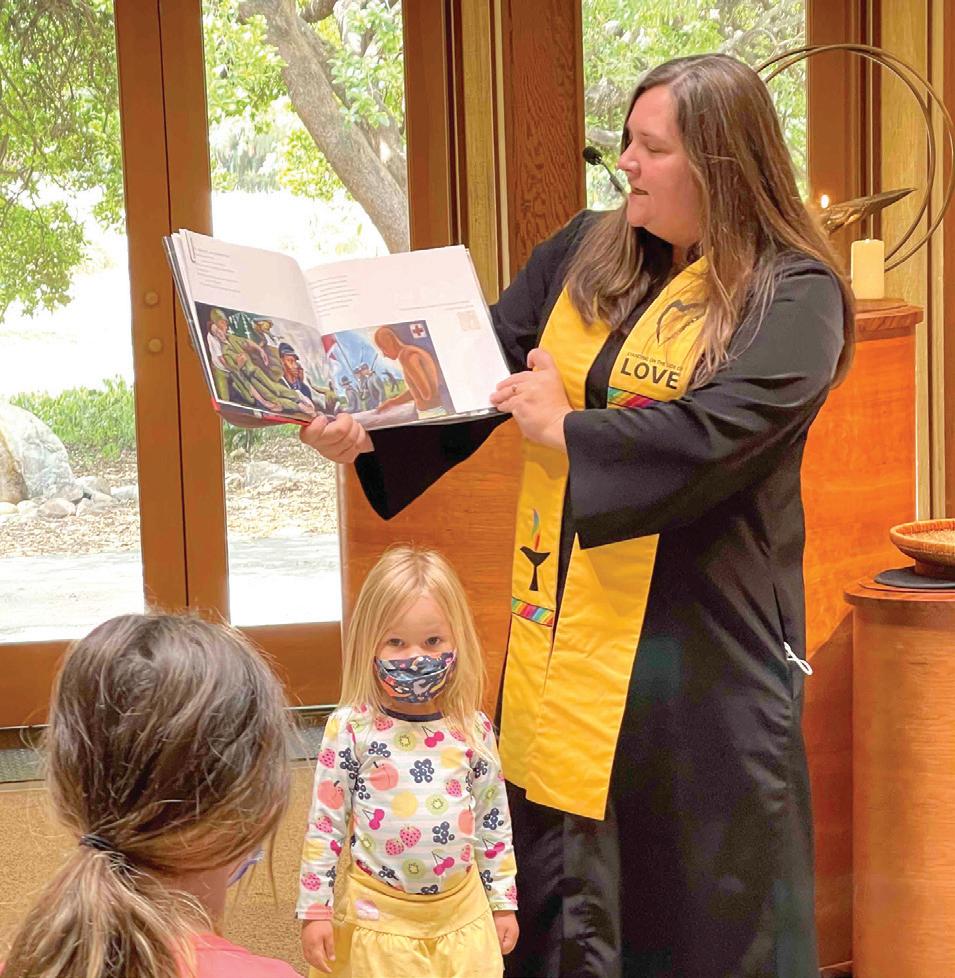
Knowing that the church would be in transition following the departure of these two beloved ministers, the Board of Directors, led by Leonie Pickett, began the search process for an interim winister in the winter of 2022.
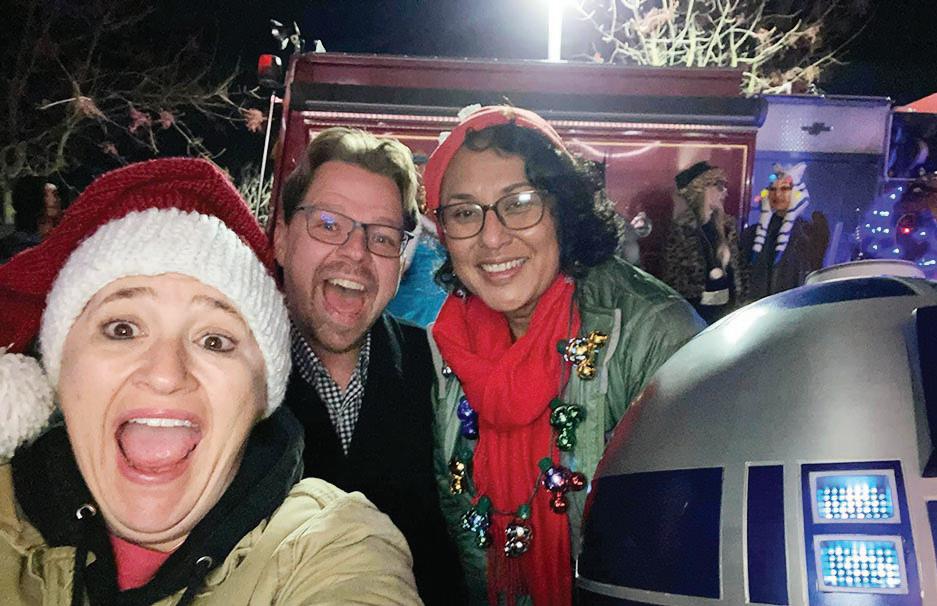
On Aug. 1, the church welcomed a new interim minister, the Rev. Connie Simon, to serve a two year term and lead the congregation through a process of reflection, transition and clarification of new directions going forward. She describes her ministry as “helping people heal from the inside-out so they can do the outside-in work our world so desperately
needs.” Her uplifting and challenging sermons have attracted a diverse audience, from longtime members to new attendees.
The UU Church attracts those seeking a variety of spiritual growth options, knowledge and practices of world religions, social justice actions, welcoming and affirming the LGBTQ community and Black Lives Matter, adult and youth religious education workshops. Though the faith’s background arose from liberal Christian traditions, its shared covenant supports the free and responsible search for truth and meaning.
For more information about social justice programming at the UUA, see https://www.uua.org/justice. The Davis church website is at www.uudavis. org. Interested parties may sign up for the church newsletter at http://uudavis.org/news/sign-up-forour-mailing-list/.
Christmas services are Dec. 24 at 4 and 5:30 p.m.
While the rafters are ringing with praise for the nuclear fusion breakthrough at Lawrence Livermore National Laboratory, let me inject a sour note. This isn’t the beginning of cheap, safe, non-polluting electricity.
It is a scientific milestone, not an electricity one. Science tantalizes, but it also deceives. Often the mission turns out not to be the one for which years of scientific research were aiming.
I would remind the world that science stirred great hope — futilely — with the idea of superconductivity at ambient temperatures after some laboratory success.
The history of fusion is a clear illustration of expectation dashed, revived, resurrected and dashed again. Now there is some hope with a stunning lab success: the first future experiment with “gain,” meaning more energy came out of the experiment than went into it.
Fusion has been the goal, the light at the end of the tunnel, for nuclear researchers for more than 60 years. In that time, there have been false prophets, failed attempts, elaborate claims and just hard slog.
That hard slog has shown what is possible: more power has been achieved in a fusion experiment for a fraction of a second. That is a huge success, but it isn’t limitless electricity, as some have heralded.
Fission — which makes possible our power reactors and warships — is splitting the atom to release heat, which is converted, via steam, into electricity.
Fusion, beguiling fusion, seeks to do what happens in stars and the sun — fusing two atoms together to produce heat, which, in a reactor, would be used to create steam and turn turbines, making electricity.
Governments and researchers have salivated over the possibility of fusion for decades, and it has been well-funded worldwide.
Getting fusion temperatures at or above those on the sun must be achieved to fuse two deuterium atoms together. Deuterium, also called “heavy hydrogen,” is an isotope of hydrogen. If you can do that and sustain the reaction for months and years, you can design a reactor that would create steam, or use some other fluid, to turn a turbine.
There are two approaches scientists have used to get fusion. One is inertial fusion, used in the breakthrough at the National Ignition Facility at Lawrence Livermore National Laboratory, near San Francisco, which involves hitting a pellet with a concentrated beam of energy: The lab used 192 super-powerful lasers to get fusion.
In the early 1980s, I spent time at Livermore and watched an experiment to hit the target with big accelerators. There were, as I recall, eight of them the size of cars. The research scientist showing me the facility said that accelerators the size of locomotives were needed to continue the experiments.
The other approach to get fusion is the tokamak, a Russian word describing a doughnut-shaped machine where plasma is superheated with electricity, and the whole thing is held together in powerful magnetic fields. This is the technology being pursued internationally by a 35-nation consortium in Cadarache, southern France.
Back in the 1970s, physicist Keeve “Kip” Siegel believed he could achieve fusion with simple, off-the-shelf optical lasers. He died of a stroke in March 1975 while testifying before the Joint Congressional Committee on Atomic Energy.
Bob Guccione, founder and publisher of Penthouse, hooked up with a former member of Congress from Washington state, Mike McCormack, and together they sought to promote fusion.
When I was looking at that fusion experiment at Livermore in the early 1980s, the researcher showed me a wonderful new way of communicating with other scientists around the world on his computer. I thought it was just a Telex on steroids and went back to questions about fusion.
It was the internet, and I missed the big story — as big as a story can get — to keep reporting on fusion. You can see why I may be soured.
Llewellyn King is the executive producer and host of “White House Chronicle” on PBS. He wrote this for InsideSources.com.
Gov. Gavin Newsom, newly inaugurated Los Angeles Mayor Karen Bass and legislative leaders are pledging decisive action on California’s homelessness crisis, which raises a pithy question: Why did it erupt during a period of strong economic growth?
The reasons often offered include a moderate climate, the availability of generous welfare benefits, mental health and drug abuse. However, a lengthy and meticulously sourced article in the current issue of Atlantic magazine demolishes all of those supposed causes.
Rather, the article argues persuasively, California and other left-leaning states tend to have the nation’s most egregious levels of homelessness because they have made it extraordinarily difficult to build enough housing to meet demands.
Author Jerusalem Demsas contends that the progressive politics of California and other states are “largely to blame for the homelessness crisis: A contradiction at the core of liberal ideology has precluded Democratic politicians, who run most of the cities where homelessness is most acute, from addressing the issue.
“Liberals have stated preferences that housing should be affordable, particularly for marginalized groups … But local politicians seeking to
protect the interests of incumbent homeowners spawned a web of regulations, laws and norms that has made blocking the development of new housing pitifully simple.”
Demsas singles out Los Angeles and the San Francisco Bay Area as examples of how environmentalists, architectural preservationists, homeowner groups and leftleaning organizations joined hands to enact a thicket of difficult procedural hurdles that became “veto points” to thwart efforts to build the new housing needed in prosperous “superstar cities.”
While thriving economies drew workers to these regions, their lack of housing manifested itself in soaring rents and home prices that drove those on the lower rungs of the economy into homelessness.
“The small-c conservative belief that people who already live in a community should have veto power over changes to it has wormed its way into liberal ideology,” Demsas writes. “This pervasive
localism is the key to understanding why officials who seem genuinely shaken by the homelessness crisis too rarely take serious action to address it.”
The syndrome that Demsas details is well known in California political circles and Newsom and the Legislature have taken some steps to reduce — or bypass — the procedural hurdles to increasing construction of new housing, particularly projects to serve the working class families most in danger of being priced out of the market and therefore becoming homeless.
The state is finally enforcing the quotas it sets on regional and local governments for zoning enough land for needed housing. It has also exempted some forms of housing from local zoning rules, and has talked about cracking down on cities that impose impossible land-use or design criteria on developers. However, the state’s mostly Democratic politicians have largely been unwilling to put their ideological brethren and allies, such as environmental groups, on the hot seat.
That unwillingness is symbolized by their persistent reluctance to make a muchneeded overhaul of the California Environmental Quality
Act, which is often misused by anti-growth activists and labor unions to tie up housing projects.
It should be embarrassing to California officials that while their state deals with a seemingly intractable homelessness crisis, red states, as Demsas points out, don’t have similar problems because they don’t have structural aversion to construction and therefore don’t have the high housing costs that drive people into streets.
The governor, legislators and others who profess commitment to ending homelessness should begin by reading the message of truth to power provided by The Atlantic, whose own ideological bent is also to the left.
— CalMatters is a public interest journalism venture committed to explaining how California's state Capitol works and why it matters. For more stories by Dan Walters, go to Commentary.

The Davis Odd Fellows Lodge was delighted to host Breakfast with Santa on Saturday, Dec. 10, attended by 325 children, accompanied by parents, grandparents or guardians. This was the 15th year that the Odd Fellows organized and hosted this popular community event. Over 50 Odd Fellow volunteers decorated the stage and tables with holiday cheer and memorabilia, cooked and served a healthy breakfast, and provided gifts for each child. But the highlight of the breakfast was the opportunity for each child to meet Santa and his Elves on stage and to have photos taken with the Old St. Nick. The children loved it. Breakfast with Santa has become so popular that tickets sold out within two days.
We wish to thank our sponsors, who provided the funds to support this event.
Official legal newspaper of general circulation for the city of Davis and county of Yolo. Published in The Davis Enterprise building, 325 G St., Davis, CA. Mailing address: P.O. Box 1470, Davis, CA 95617. Phone: 530-756-0800. An award-winning newspaper of the California Newspaper Publishers Association.
In addition, the sponsor donations allowed the Lodge to make major financial contributions to the The Yolo Crisis Nursery and to Davis Community Meals and Housing. Thank you to our Major Event Level Sponsor: The Stuart Foundation and Davis Campbell, and to our Holiday Event Level Sponsors: EdwardJones and David Cougevan, as well as the Davis Firefighters Local 3494 and Bobby Weist.
Other sponsors include the Santa Claus Level Sponsors: Dawn Coder (Realtor CB Select), Kathryn Hemness, Music Only Makes Sense, and Raquel Silva (Attorneyat-Law). The Santa’s Bag Level Sponsor: Lea and Dave Rosenberg; the Santa’s Sleigh Level Sponsor: Teresa Fong and Dolly Hamilton; and the Santa’s Reindeer Level Sponsors: Tim Ainsworth and Joyce Trujillo. Finally, thank you to our Elf Level Sponsors: Blayney Breckenridge, Sheryl Cambron & Dave Reed, Judy Capurro, Chuck Yannacone & Claire Daughtry, Duff Devine, Elisabeth Lasensky, Christine Perry & John Fortune, Elysa Hillis, Doug Houck, Chris Roland, Don Saylor and Blake & Nancy Temple.
Special thanks to Woodstock Pizza
202-224-3553; email: padilla.senate. gov/public/index.cfm/e-mail-me
which donated the delicious Cinnabread for the breakfast.
Merry Christmas and Happy Holidays to all. Hope to see you for the 2023 Breakfast with Santa.
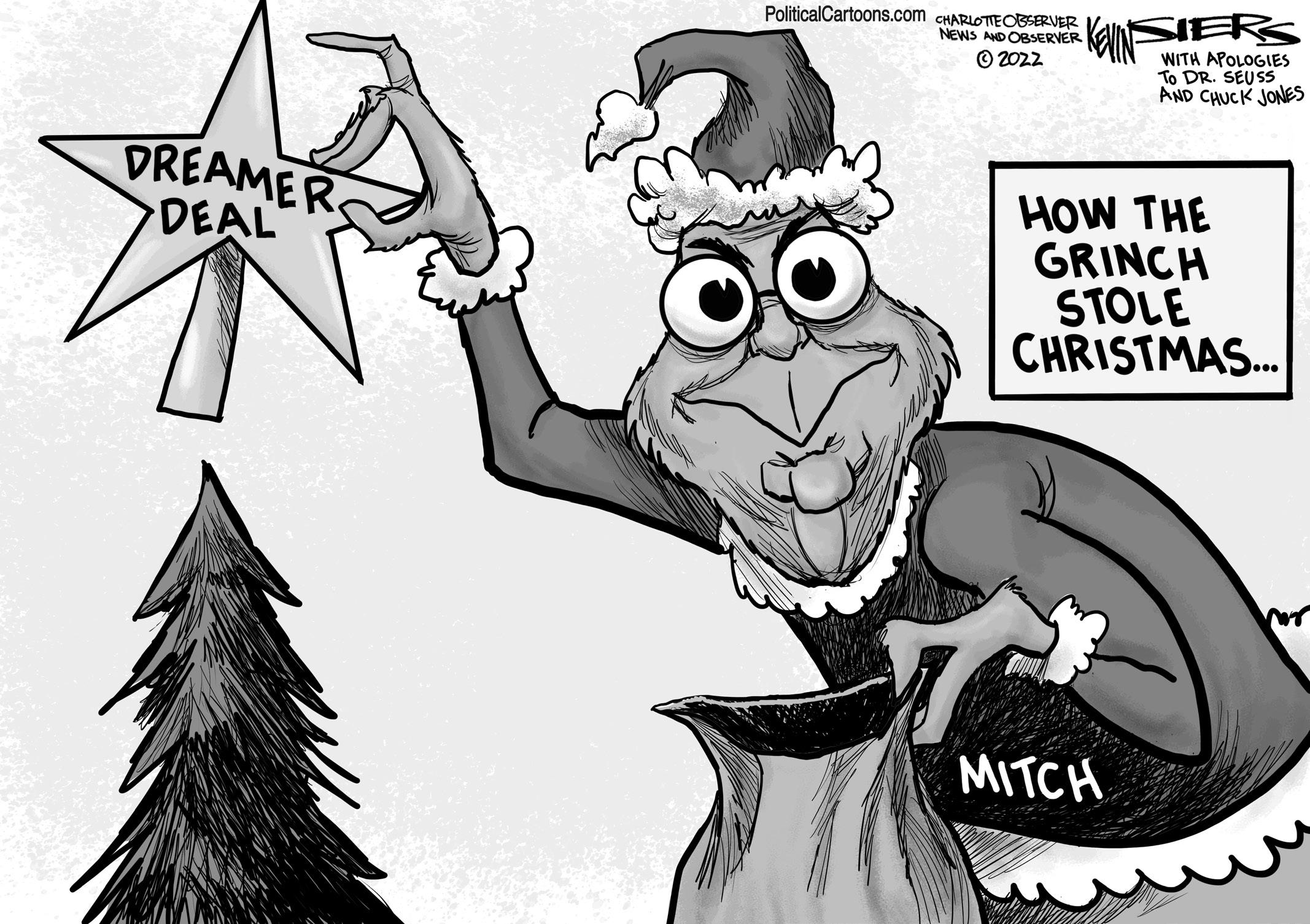
Lea Rosenberg and Nan Klein Breakfast with Santa co-chairs
The purpose of this letter is to mention Bob Dunning’s name so he gets $5. His last column used the word “negative,” so give him $10. Bob got me fired up so much that you ought to fire him on the spot as you hand him $30, or else I’m canceling my subscription ($40 more for Bob). I’m heading out to TP the city-mandated hackberry tree in his front yard, so a sweet grant for Bob.
In conclusion, let’s see the total for Bob is $5 + $10 + $30 + $40 + $50 + 100 (see letters after my name) = a cool ... (“Honey, where’s my calculator?”) ... oh, let Bob total it up!
Keith Redenbaugh, Ph.D. Davis
The Hon. Joe Biden, The White House, Washington, D.C., 20500; 202-456-1111 (comments), 202-456-1414 (switchboard); email: http://www.whitehouse.gov/contact U.S. Senate
Sen. Dianne Feinstein, 331 Hart Senate Office Building, Washington, D.C., 20510; 202-224-3841; email: http://feinstein. senate.gov/public/index.cfm/e-mail-me Sen. Alex Padilla, B03 Russell Senate Office Building, Washington, D.C., 20510;
Rep. John Garamendi (3rd District), 2368 Rayburn House Office Building, Washington, D.C., 20515; 202-225-1880.
District office: 412 G St., Davis, CA 95616; 530-753-5301; email: visit https://garamendi.house.gov/contact/ email
Gov. Gavin Newsom, State Capitol, Suite 1173, Sacramento, CA 95814; 916-4452841; email: visit https://govapps.gov. ca.gov/gov40mail/
Addresses and phone numbers should be included for verification purposes; they will not be published.
Limit letters to 350 words. Anonymous letters will not be accepted. We reserve the right to edit all letters for brevity or clarity.
Mail letters to The Davis Enterprise, P.O. Box 1470, Davis, CA 95617; bring them to 315 G St.; fax them to 530-756-1668; or email them to newsroom@davis enterprise.net.
Dr.
While thriving economies drew workers to these regions, their lack of housing manifested itself in soaring rents and home prices...
n Editor’s note: Tanya Perez is taking the day off. This column originally published in December 2017.
Acouple of years ago, I mentioned my family’s tradition of having a fondue night during the holidays. It is one of my favorite — and only! — traditions that I insist on every year.
I say “insist” because it’s an incredible amount of work to put this together each year, and there’s usually one of us among the fondue production crew who wants to scrap the whole thing.
Nevertheless, we persist. And I’m not just persisting, I’m trying to convince you to start this tradition as well. Because it is so much fun and worth the effort, especially if you follow some of my tips, below.
But first, let me tell you about the origins of our fondue night. It started in 2006, when my husband, S, the kids and I went to The Melting Pot in Sacramento around Christmastime with S’s parents. Our then 6- and 9-year-old sons dressed
up in ties and we all felt very fancy and festive.
The next year, we expanded it to include my mom, my brother and his family; a couple of years after that, my mom and I decided we could personalize the fondue experience, so we began having the holiday meal at my house. Now in its 12th year, the younger generation’s boyfriends and girlfriends also attend. On Tuesday night, we will have a fondue feast for 14.
We set it up around our kitchen island, and nobody sits. This is a roaming event, where at random times my brother yells, “ding!” and we all have to shuffle two spaces to the left so that everyone gets a chance to dip in the preferred pot with the preferred dippers. A sushi boat
built into our kitchen island would be ideal!
For those without a large island, a dining table would work fine. Running an extension cord to underneath the table should handle the electrical requirements of multiple fondue pots, and I suggest you pull the chairs away and have people stand.
For me, I enjoy the social aspect of this meal, and especially not being stuck in a seat where I can’t chat with everyone there. Formal holiday meals often mean you only talk to the person directly beside you, but you can’t hear the other interesting conversations going on a few people away.
Another fun tradition we adopted is that whenever someone loses a dipper due to it sliding off into the cheese or chocolate, he or she is obligated to plant a kiss on the person to the right.
As for the preparation, we divide and conquer. I handle the cheese course, which consists of a traditional Swiss as well as a
beer-cheddar; for dipping, we have sourdough and pretzel rolls, Granny Smith apples and pears, and veggies.
For the meat course, we do a boiling oil as well as a broth; we cook shrimp, steak, chicken, ravioli, potato, mushrooms and other veggies. My mom takes care of this one.
And the chocolate course starts with a dark chocolate in which we dip all kinds of fruit, graham crackers, marshmallows, cheesecake chunks, pretzels and our own fingers. My sister-in-law is in charge of this.
My mom-in-law takes care of drinks, and the kids handle cleanup.
Speaking of cleanup, my mom has procured a number of working electric fondue pots (our island conveniently has electricity) and a bunch of fondue forks at various thrift stores. I think she has five pots now, so we don’t have to clean each one to prep for the next course. She labels all of the fondue forks with our names — everyone gets two or three forks — and small
plates work for each eater. There also are a variety of dipping sauces for the main course. We typically have a peanut satay sauce, cocktail sauce, teriyaki, horseradish dip, marinara and a couple of others to complement the meats, ravioli, mushrooms and potatoes. My mom handles the sauces, including providing small plastic cups so we all have our own in which to double-dip.
As I just re-read this, I can’t decide if this column conveys the amount of fun or work involved in hosting a fondue night. So let me summarize: Fun edges out work by a wide margin.
And seriously, if you have any logistics questions — including how we will be accommodating a couple of vegans in the group — feel free to send me an email.
— Tanya Perez lives in Davis with her family. Her column is published every other Sunday. Reach her at pereztanyah@ gmail.com. Follow her on Twitter at @californiatanya.

Storytelling is powerful medicine. Sometimes, storytelling can deliver a level and type of comfort to a patient or family that no amount of prescription medications can touch.
This is especially true for families who are in transition or in the process of losing someone they love.
The holidays are particularly difficult times for people who are sick, separated from loved ones, suffering, or coping with anticipatory loss.
Over the years, I have heard many families say they struggle to find meaningful ways to celebrate the season or experience joy when they feel anchored down by sadness, grief, estrangement, worry, or the overwhelming weight of an impending death.
The best stories carry the power to transport someone to another time and place. They can help someone forget about their current surroundings or situation and allow them to become immersed into another reality. The immersion can feel soothing, reassuring, and spiritually profound. For someone who is seriously ill, storytelling provides them with an opportunity to preserve memories and wisdom. Sometimes, it is also a chance for the person to talk through issues that remain unresolved.
People nearing the end of life tend to be reflective, looking back on what they
did well and what they wished they would have done differently. They want to pass that wisdom forward to those they love. Being remembered for more than one generation is important.
Emerging research has revealed that a variety of chemicals are released in the brain as people tell and listen to stories. People become lighter and happier, and they realize that their life story is worth sharing and preserving. The story becomes medicine for both the storyteller and the listener.
Dottie Kluttz, a retired hospice nurse from Hospice Savannah, said, “I know there are a lot of people studying the ways a story can help people feel better, but I don’t care about the science of it. I care about the magic of it.”
When my own mom was dying of breast cancer that had slowly and painfully metastasized to her spine and liver, we both found immeasurable comfort, and a few rays of laughter in the telling of family stories and experiences we longed for from a distant era. She asked me to write down the things we discussed and to remember the joy they brought into our lives.
Following her death, I blended our shared stories to capture the essence of what made our holidays special. As research suggests, I find comfort and healing in the power of our
personal narratives every time I pull them out of my dresser drawer and remember. There is one piece that always feels like a visitation from an old friend.
Written in December of 1994 — two years after mom’s death:
The longings are intense this time of year. I wish I could lift my weight and soar with the autumn geese above the expansive Wisconsin marsh ... to feel weightless and experience the glide underneath my limbs as I survey the wetlands from on high and watch them become soft patches of shaded sea foam green and gold, quilted together by threads of sparkling silver and muted pewter.
I long to embody achievement. Not the adulterated brand, but the variety that flows from finishing a task directly tied to the reason for my existence. I need to see that my day-to-day life leads to a temple of sum and substance.
I long to be wrapped in the amber tones of my mother’s voice and encounter the warm vibration of her raspy words and character — an experience that mimics the glowing tang of a favorite tawny port.
If only I could, once again, feel her abundant, hearty spirit push out the walls of a room.
I want to go back in time ... to the backdrop of my youth; to Aunt LuLu’s tiny urban home where the tinseled Christmas tree extends to the middle of the living room and relatives are spilling out of

every doorway and onto an ice-covered wooden porch. To be back in a smokeand laughter-filled house brimming with aunts and uncles, great aunts and great uncles, cousins and second cousins, grandmas and grandpas and LuLu’s charcoal poodle Pepe — all crammed in like a litter of playful high-powered puppies in a cardboard box.
I long for the chrome and vinyl kitchen chairs placed on lemon and grass green swirls of linoleum, and the whirling aromas of oven roasted turkey and brown sugared ham, brandy and beer, Virginia Slims and Camels, pecan pie, brown-edged mashed potatoes in Nesco roasters, melting chocolate Santas and sweat. I crave the satisfying sound of cards being shuffled, cut, banged and whacked on salt and pepper Formica as grandpa declares, “fifteen two, fifteen four and a pair is six.”
I long to once again be blanketed by this patchwork of texture, color and warmth, and then, after a long hard play that’s
produced cherry cheeks and a glistening forehead, to sink into sleep with my head braced by the refuge of mom’s lap.
Capturing and telling stories can be profoundly effective in helping someone reflect on chapters of life that were especially poignant or important. The stories themselves carry magic to connect and heal.
A growing body of brain science offers insight into what is behind these experiences. On functional MRI scans, many different areas of the brain light up when someone is listening to a narrative.
The work of recalling and contemplating memorable experiences can generate a sense of purpose, reassurance, self-understanding, validation, and clarity. In times of transition, especially at the end of life, story-sharing holds the power to illuminate a path forward. It can also provide an immeasurable
sense of serenity and closure.
For families, this work creates a sense of lineage and heredity that can easily be lost as older generations die off and take their stories to the grave. Families frequently talk about doing this work but rarely get around to taking the initiative.
Sometimes they may not be sure where to begin, however, those who work in end-of-life care would say, “begin today.”
Story-sharing helps us to truly know and to be known. It helps us understand where we came from, where we want to be, and why our life matters. It defines us and binds us. Every life is a tale worth telling. It may be the best gift we can exchange during a season of giving and sharing.
— Craig Dresang is the CEO of YoloCaresThe University of Alaska Fairbanks named Mark Caldwell of Davis to the summer 2022 deans’ list. UAF recognizes students named to the deans’ and chancellor’s lists each semester. The lists recognize students’ outstanding academic achievements.
Students receiving a 3.9 grade point average or higher make the chancellor’s list, while those with a GPA between 3.5 and 3.89 are on the deans’ list.
UAF is a Land, Sea and Space Grant institution, and is the leading doctoral degree-granting institution in the state of Alaska. Since it was founded in 1917, UAF has been internationally recognized for research relating to the Arctic and sub-Arctic, in
areas such as biology, geophysics, engineering, natural resources and global climate change.
Adrianna Rivas of Woodland is a member of the Phi Kappa Phi Honor Society.
The Honor Society of Phi Kappa Phi — the nation’s oldest and most selective collegiate honor society for all academic disciplines — has recognized Stanislaus State’s chapter as a Circle of Excellence Gold Chapter, the second-highest commendation a chapter can receive from the organization.
The award is given to chapters that exceed expectations in chapter operations and that
demonstrate sustainability and vitality. Since Stanislaus State Chapter 282 was chartered in 1999, it has inducted more than 1,800 members.
Membership is by invitation only to the top 10 percent of seniors and graduate students and 7.5 percent of juniors.

California State University, Stanislaus, serves a diverse student body of more than 10,000 at two locations in the Central Valley — a 228-acre campus in Turlock and the Stockton Campus, in the city’s historic Magnolia District.
— Do you know of someone who has won an award or accomplished something noteworthy? Email it to newsroom@ davisenterprise.net.
 By Don Shor Special to The Enterprise
By Don Shor Special to The Enterprise
Christmas and citrus are inextricably connected in my memories.
As a child growing up in Southern California, the gourmet fruit in the toe of my Christmas stocking each year was a tangerine. To be specific, it was a Dancy tangerine, one of the first mandarin-type oranges that became commercially popular in the United States.
Dancy fruit are very juicy, easy to peel, very sweet but also more acidic than oranges, and quite seedy. We were required to eat them on the patio so we could spit the seeds at each other. Eating tangerines outside on Christmas morning is one of those special Southern California treats.
Mandarins, on the other hand, were something my mother bought in cans to mix into jello.
Dancy tangerines are tangy, though that isn’t the origin of word “tangerine.” In fact, it’s more likely the other way around.
The parent of the seedling found and grown in Florida by Colonel Dancy in 1867 was from Tangiers, Morocco. There were other varieties that preceded Dancy from those Moroccan parentages, all called “tangierines.”
These were some of the first citrus grown commercially in Florida, the first that were consistently grafted or budded (vs. seed-grown), and for about a century Dancy was the predominant variety of mandarin, a very special fruit that ripened in time for the holidays.
Is a tangerine a specific type of mandarin orange, or is it just a generic name for the whole group of small, sweet-tart, easy-to-peel oranges? Are all “tangerines” mandarins? Are all “mandarins” tangerines?
The original mandarin orange is one of the important parents of modern citrus varieties. We can divide them into four categories: tangerines, satsumas, clementines and modern mandarin hybrids. So, tangerines are a subset of mandarin oranges with their own distinct pedigree.
Many citrus varieties are natural hybrids that grew as chance seedlings, or as “sports” (localized mutations) on existing trees. There are numerous natural and intentional hybrids between mandarins and other citrus.
U.S. Department of Agriculture and UC Riverside have introduced important varieties, including some excellent choices for home gardeners. These were created through intentional, old-fashioned hybridization.
Clementines, which have become the most popular category in recent years thanks to shrewd marketing, are crosses between true mandarins and an orange (hence their milder flavor).
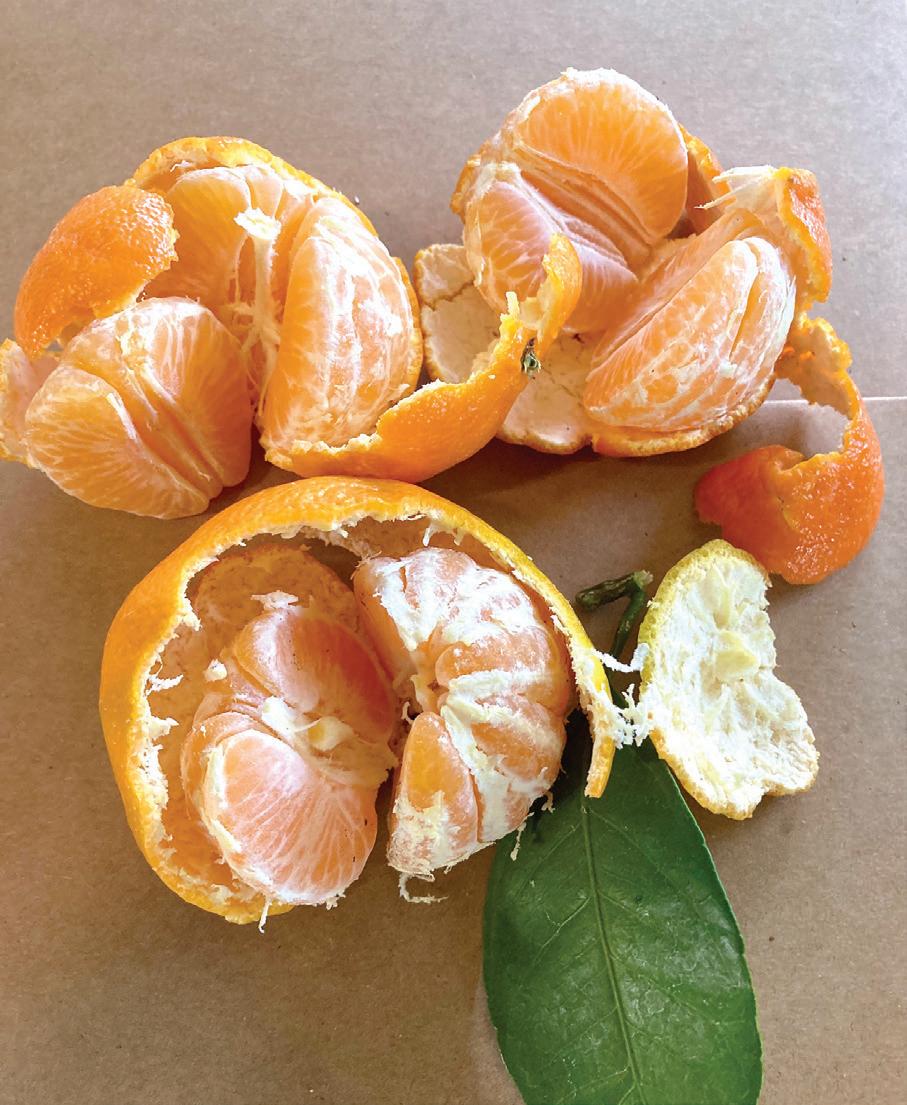
Mutations have sometimes been induced via irradiation. Genetic modification (gene insertion) may be a source of future varieties, as plant breeders race to beat HLB disease, but no commercial or home garden citrus are presently produced that way. Two successful citrus varieties that were created by irradiation of budwood include Tango, a naturally seedless clementine mandarin used in the ‘Cuties’ and ‘Halos’ marketing programs, and the Rio Red and Star Ruby grapefruits which have unusually dark pink flesh.
High value crop
California now produces most of the mandarins in the United States. There are about 67,000 acres of mandarins in California, especially in Tulare, Kern and Fresno counties. Those are the three highest-value ag production counties in the United States). There’s money in mandarins.
How about Florida citrus?
HLB disease has really taken a toll on citrus production in the Sunshine State. Total acreage of all citrus in Florida has been dropping 2 to 3% per year for several years due to the widespread infection of orchards by HLB. The pace of acreage loss has been accelerating: citrus acreage in Florida decreased by 8% in 2022. There are about 10,000 acres of mandarins and tangelos in Florida. Which, by the way, they call tangerines. Why we grow them
The characteristics of all these related types of citrus that we call mandarins are:
Easy to peel
• Sweet but with a rich, tangy flavor
Very little bitterness
Juicy
• Seedless strongly preferred
Soft peel is typical
• Ripen in winter and/or spring
Lack of bitterness
Naringin, limonin and citrus oil all taste bitter and are present in most citrus fruit, but in very different levels in different types. The bitterness is concentrated in the white, spongy part between and around the segments, and in the peel. If those separate off readily, and the fruit is handled carefully to avoid bruising, more than 90% of those bitter compounds are removed before we eat the fruit.
Those bitter compounds provide some complexity to the flavor and most people expect and accept slight bitterness in citrus. Grapefruit are notably bitter and not to everyone’s taste, but crossing Dancy tangerine with a grapefruit led to the very rich-flavored Minneola tangelo.
Minneola is easy to grow in your back yard. Your fruit will likely have seeds as it cross-pollinates with nearby citrus trees. Note: the rind color changes before the fruit is at peak sweetness. They look great in January, but are sweetest March to April.

Mandarin oranges are some of the easiest citrus to grow!
Typically compact growth habit, more like large shrubs than trees.
• Easily maintained low enough by simple pruning so you can pick all the fruit from the ground.
• Mandarins are cold hardy here. Cold weather improves the sweetness of the fruit.
Note that production is heavy in alternate years. This is a drawback for farmers but of little consequence to home gardeners.
• With careful variety selection you can harvest mandarins from your back yard easily from November through spring, even into summer. Where and how
• Full sun is best.
Trees should be planted up a bit, so water drains away from the crown.
• Water deeply and infrequently once established. Expand the watering zone as the tree grows.
Note: always cut — don’t pull — mandarin fruit when you pick them. That keeps the peel intact, so they store longer.
Which varieties?
• Owari Satsuma: the gold standard for flavor in mandarins, and really one of the very best fruit trees you can grow in this area. Ripens December to January.
Farmers in Placer County planted satsuma mandarins many decades ago, notably near Newcastle and Penryn. Autumn nights are colder there, and that early chilling makes the fruit sweet earlier, so they can pick and market for Thanksgiving. My experience with the same variety here is that they ripen in December most years. Very cold temperatures this fall ripened my fruit a few weeks ahead of schedule.
This is the classic puffy-skinned mandarin that peels
in one quick piece, nearly seedless, and very juicy. They’re vulnerable to weather damaging the fruit, so the season can be short. They’re usually done by January.
There are several varieties in this category. These are the mainstays of the branded mandarin marketing programs you see in the grocery store. Sweet, milder flavor than satsumas because of the lower acidity, easy to peel but tighter skin. The texture is crisper.
Farmers exclude bees to prevent seeds in the fruit. In your yard they will have some seeds if there are other citrus nearby. The tight skin makes them more prone to fruit splitting in summer than other types.
My clementines begin to ripen in late December and are at their best through January, holding well into February.
In my opinion, this is the best-flavored of the mandarins in the commercial ‘Cuties’ program. Naturally seedless, very sweet and somewhat tangier than the clementines, it begins ripening in February and is great into April. Very productive, not as prone to fruit splitting as the others.
This is a vigorous tree that will need some pruning to prevent overproduction and limb breakage.
Shasta Gold, Tahoe Gold, Yosemite Gold
Breeders at UCR created hybrids that are complex crosses between 4 – 5 varieties of mandarins, including our old friend Dancy. All have great flavor, are seedless and easy to peel, and hold on the tree well. Shasta Gold has become the most popular of this group, ripening February into April.
Hybridized at UCR “sometime in the 1950s.” The Givaudan Citrus Variety Collection at UCR maintains a phenomenal citrus database, and there we find high praise: “The taste is extremely sweet when mature (brix 15.0% in March, 17.5% in May) with a very rich flavor, considered by professional taste panels to be one of the very best flavored citrus in the world.”
That’s very late-ripening and the fruit is said to hold well on the tree into summer.
Easy to peel, naturally seedless. How about Sumo mandarin?
Sumo is a trademark name of the Dekopon mandarin from Japan, also called shiranui there. For many years all shiranui trees in California were controlled by one company by the simple fact that importing budwood from Japan is a long, costly quarantine process. The company that introduced it brought it into our state in 1998, and it was 2011 before Sumo mandarins appeared in stores.
Nursery growers of trees have gained access to disease-free stock (from UCR, again) and begun propagating it, so home gardeners will soon be able to grow these huge mandarins themselves.
Some special practices are required to get extra-large, very sweet, seedless fruit from this variety.
• It takes careful pruning and fruit thinning to achieve good fruit size.
• The peel is soft, and the fruit is notable for the large ‘bump’ on top (much like the Minneola tangelo). That softer peel makes the fruit more vulnerable to weather damage. Harvest (cut, don’t pull) and handle with care. In Japan they grow them in greenhouses to protect the fruit.
After harvest the fruit are left to sit for a few weeks to let the acidity decrease and the sugar content increase. Eaten right off the tree, they are much like a satsuma mandarin. In a few weeks, they’re sweeter.
Shiranui is very sweet, easy to peel, and juicy. Seedless? California growers isolate them by covering the trees in bloom to prevent bees from reaching the flowers, and then they spray with gibberellic acid to induce fruit set (as is done with the clementine varieties in the branded programs). Fruit on trees in the UCR Citrus Variety Station are seedy, and fruit from a tree in your back yard will likely have seeds as well.
Peak flavor is January to February, with good quality fruit into April.
Per SlowFoodUsa.org, “In 2012, no Dancy fruit was available on the market for the first time since 1874. While nurseries still sell young trees as a ‘door-yard’ cultivar, the most historically significant and culturally resonant tangerine has vanished from the produce market.”
But you can buy trees and grow them yourself if you’re nostalgic for Christmas Day seed-spitting contests.